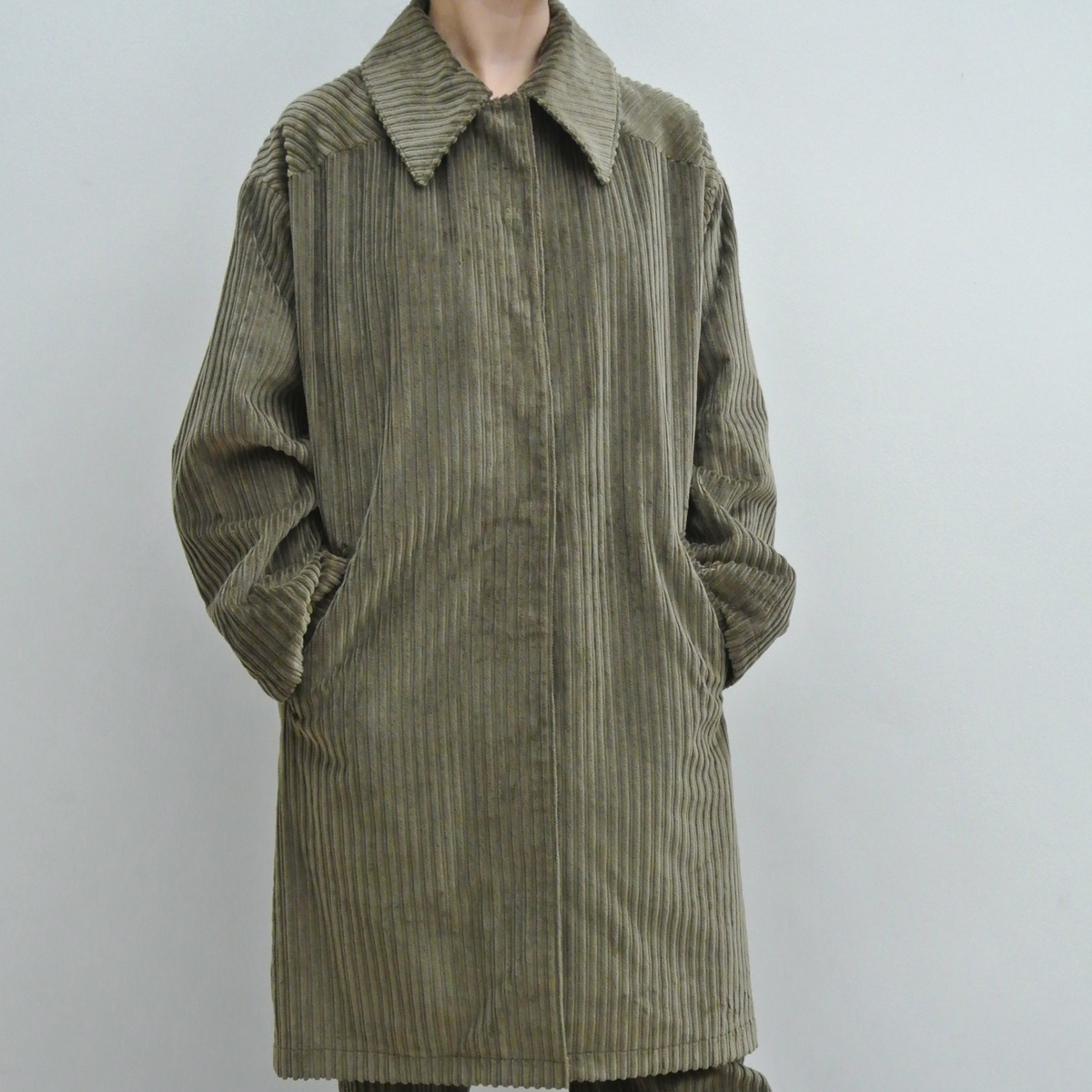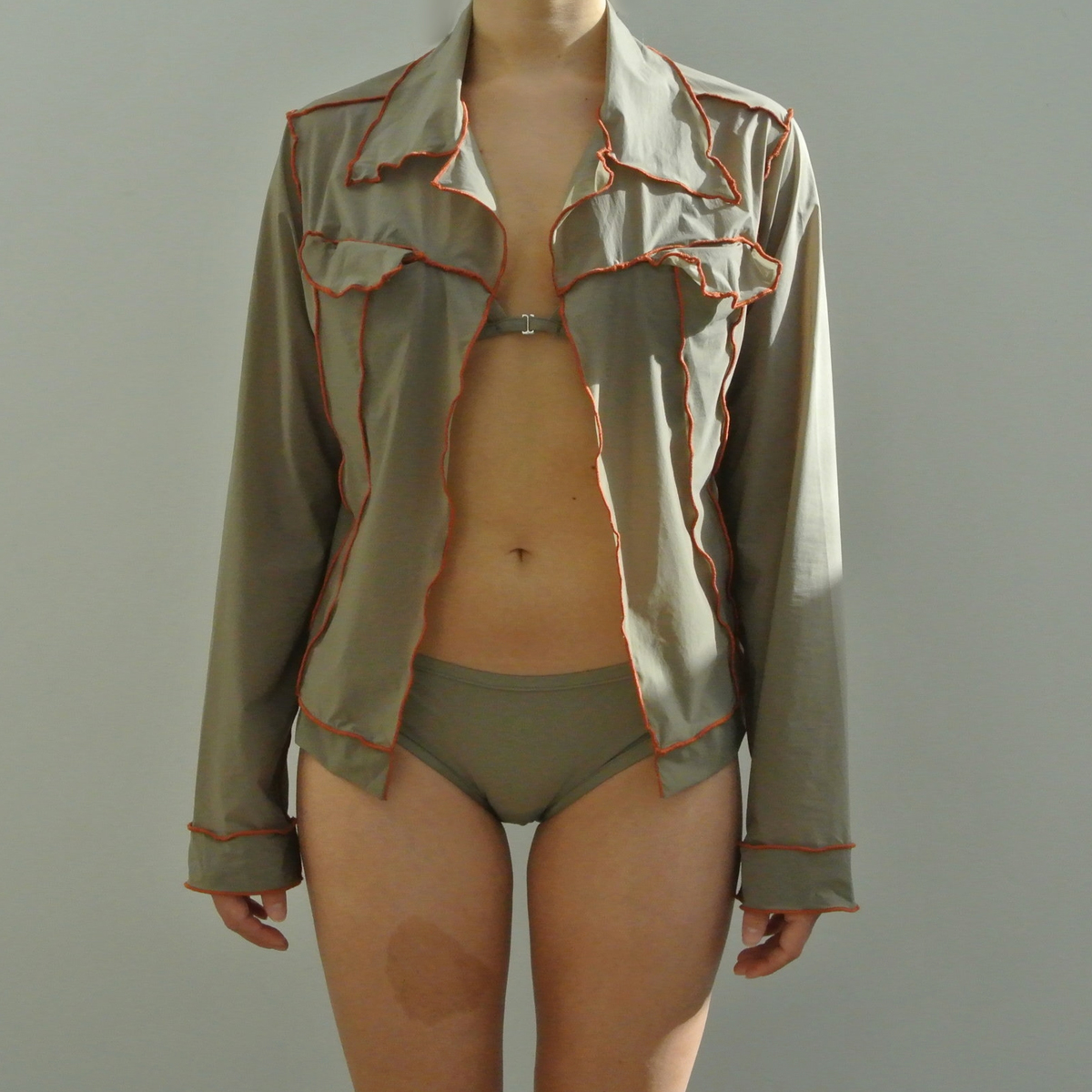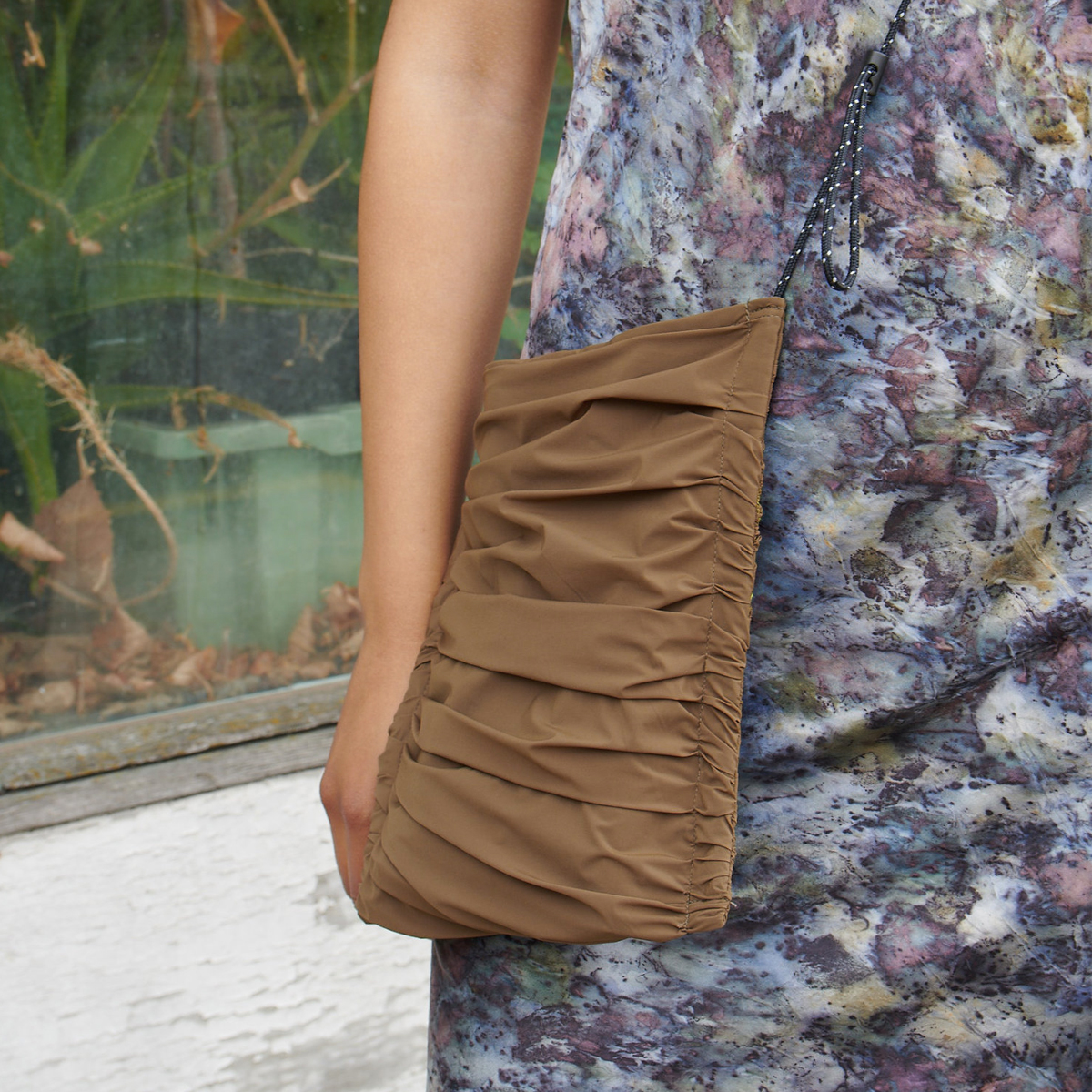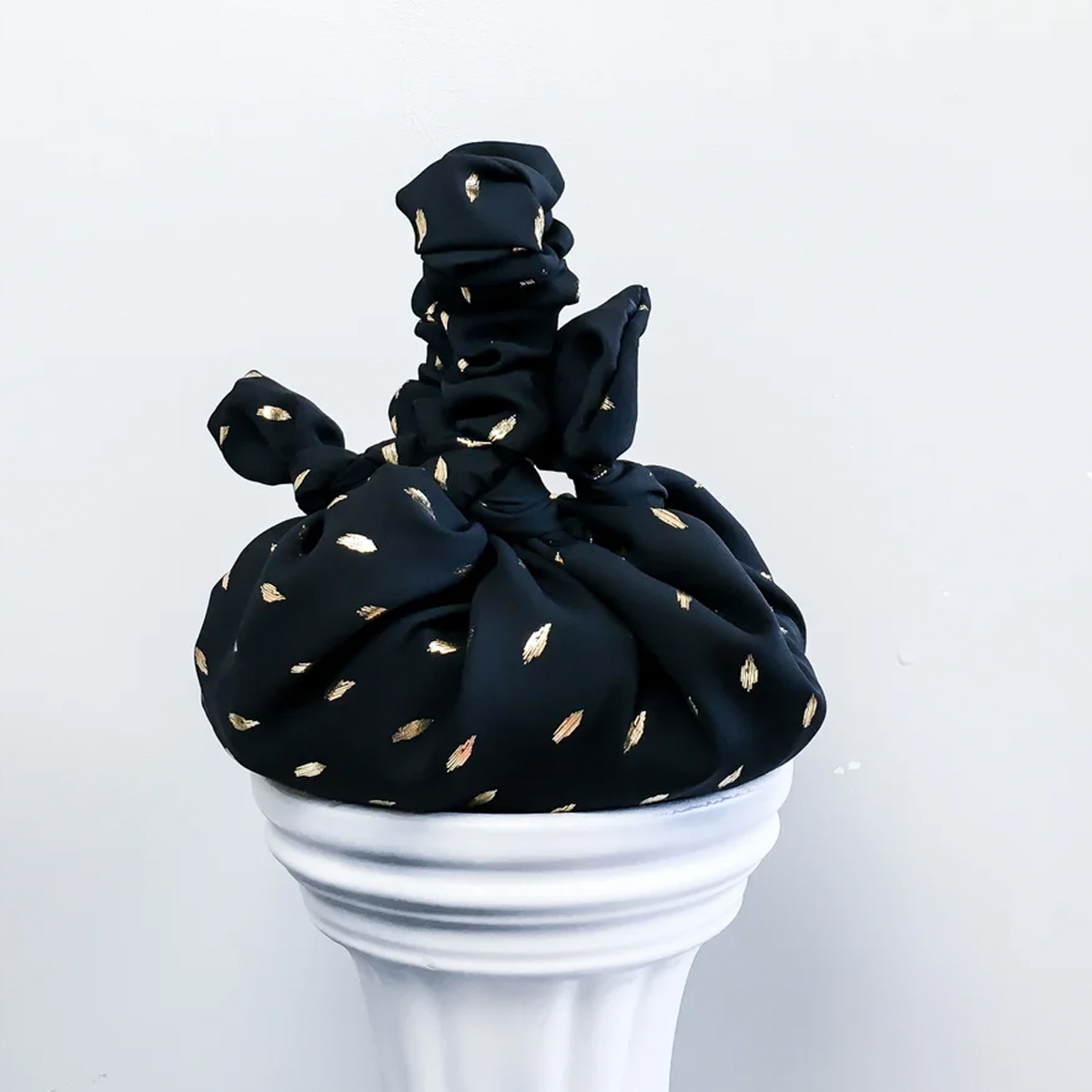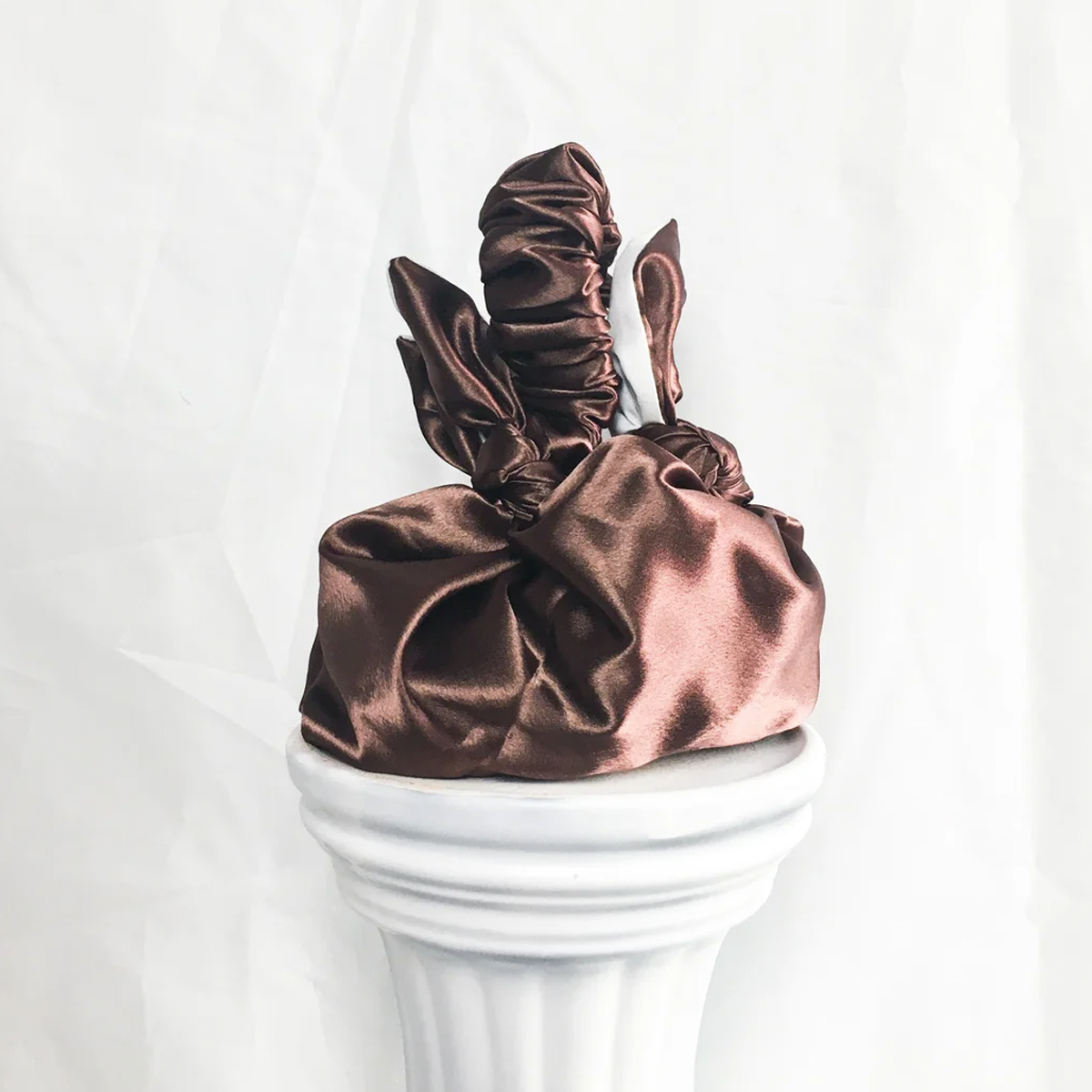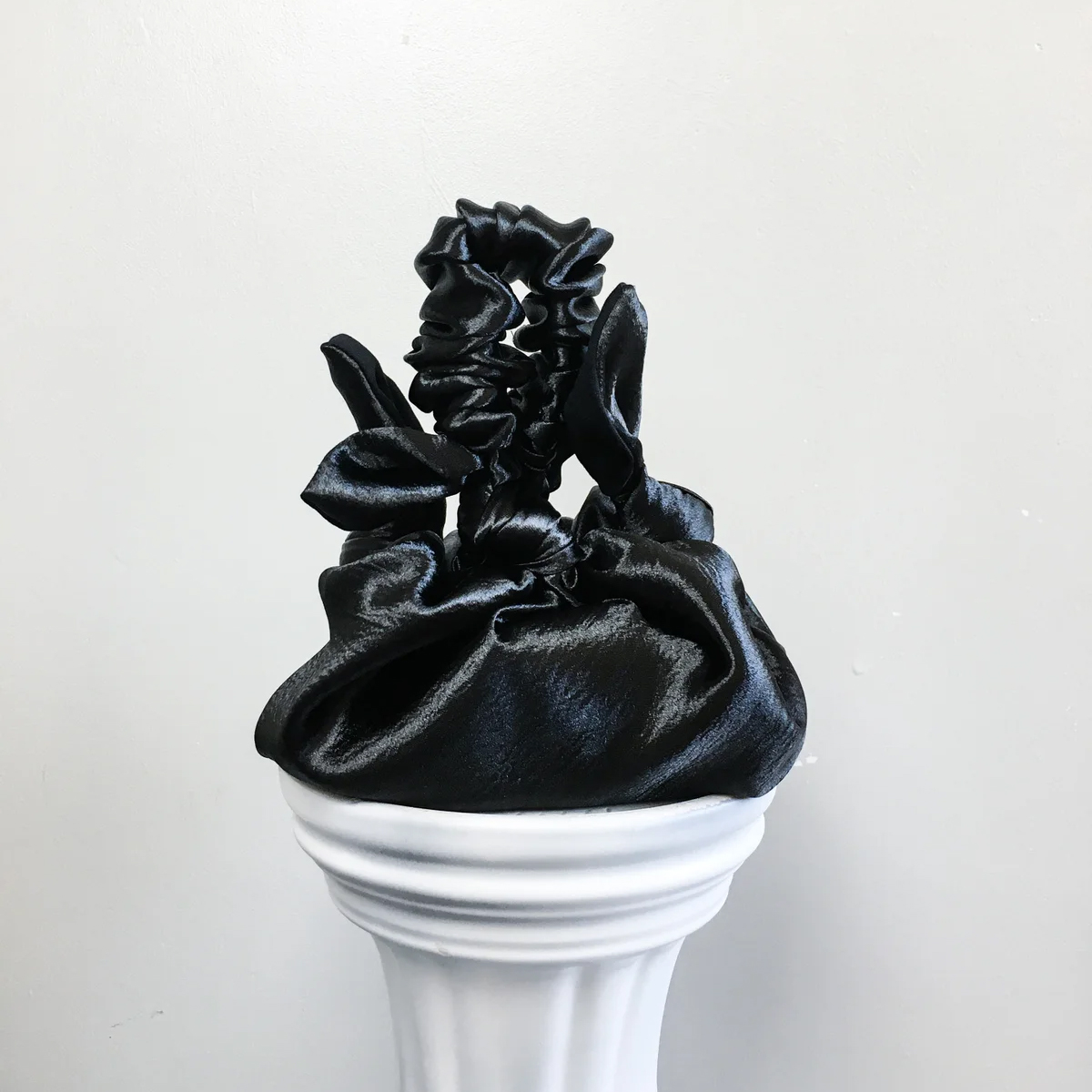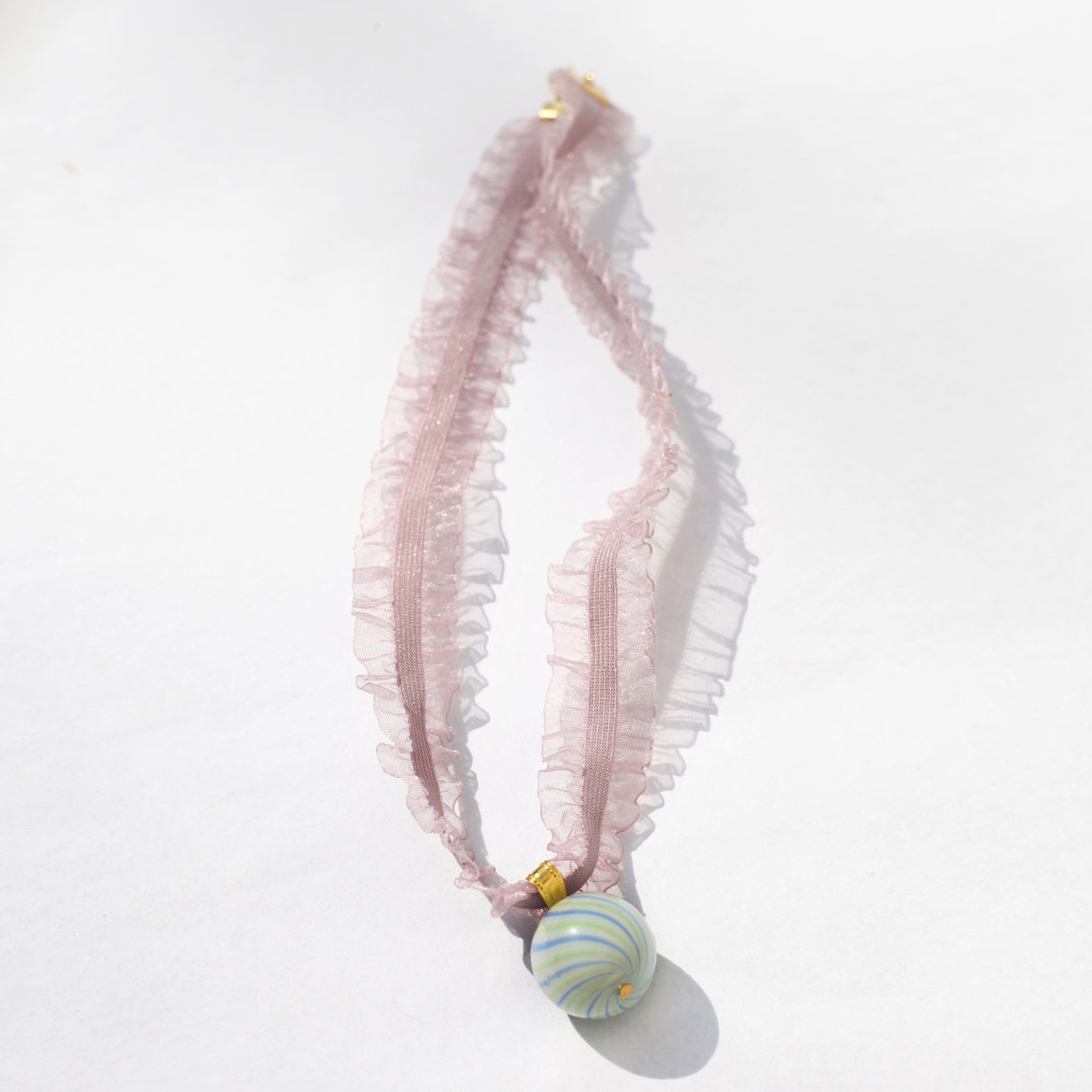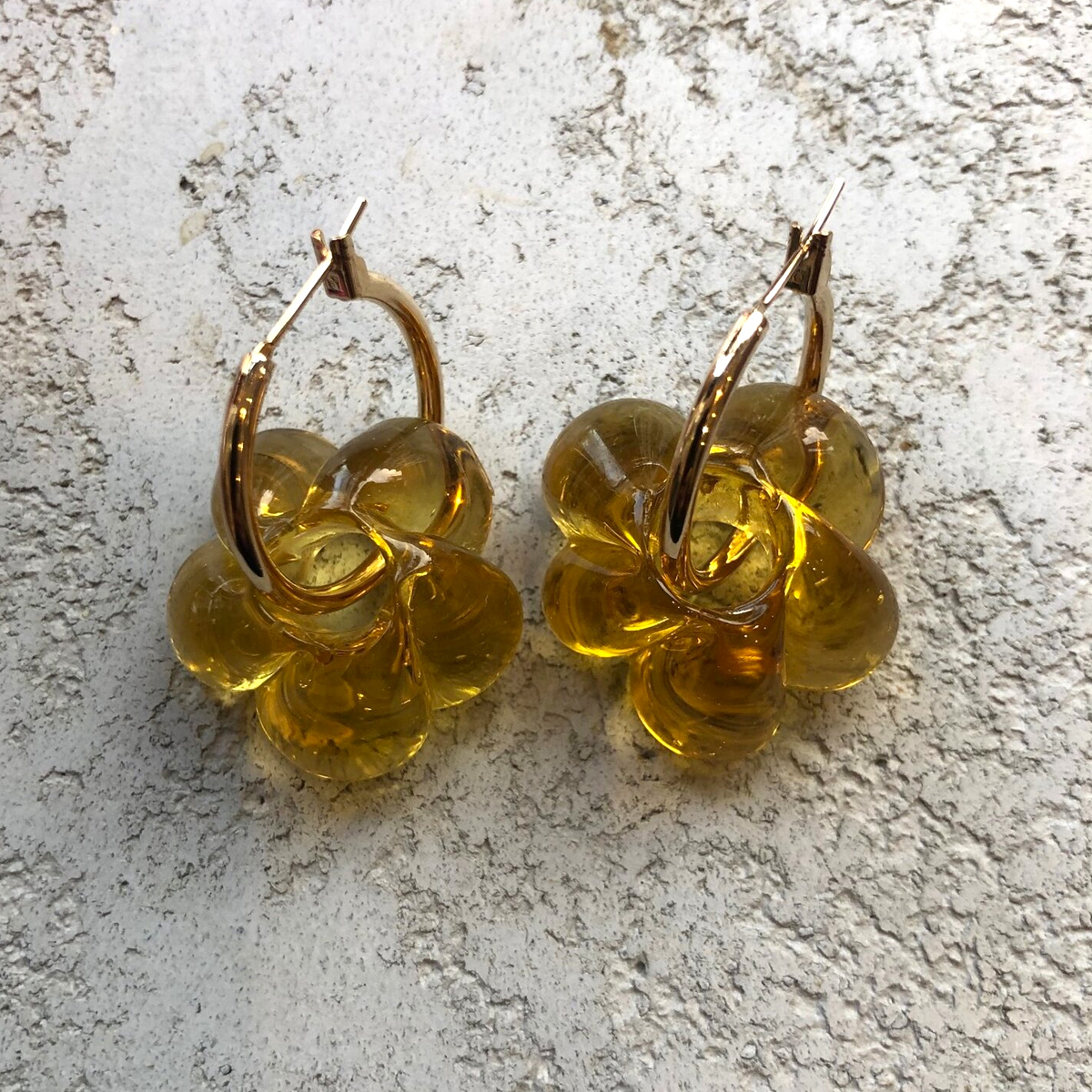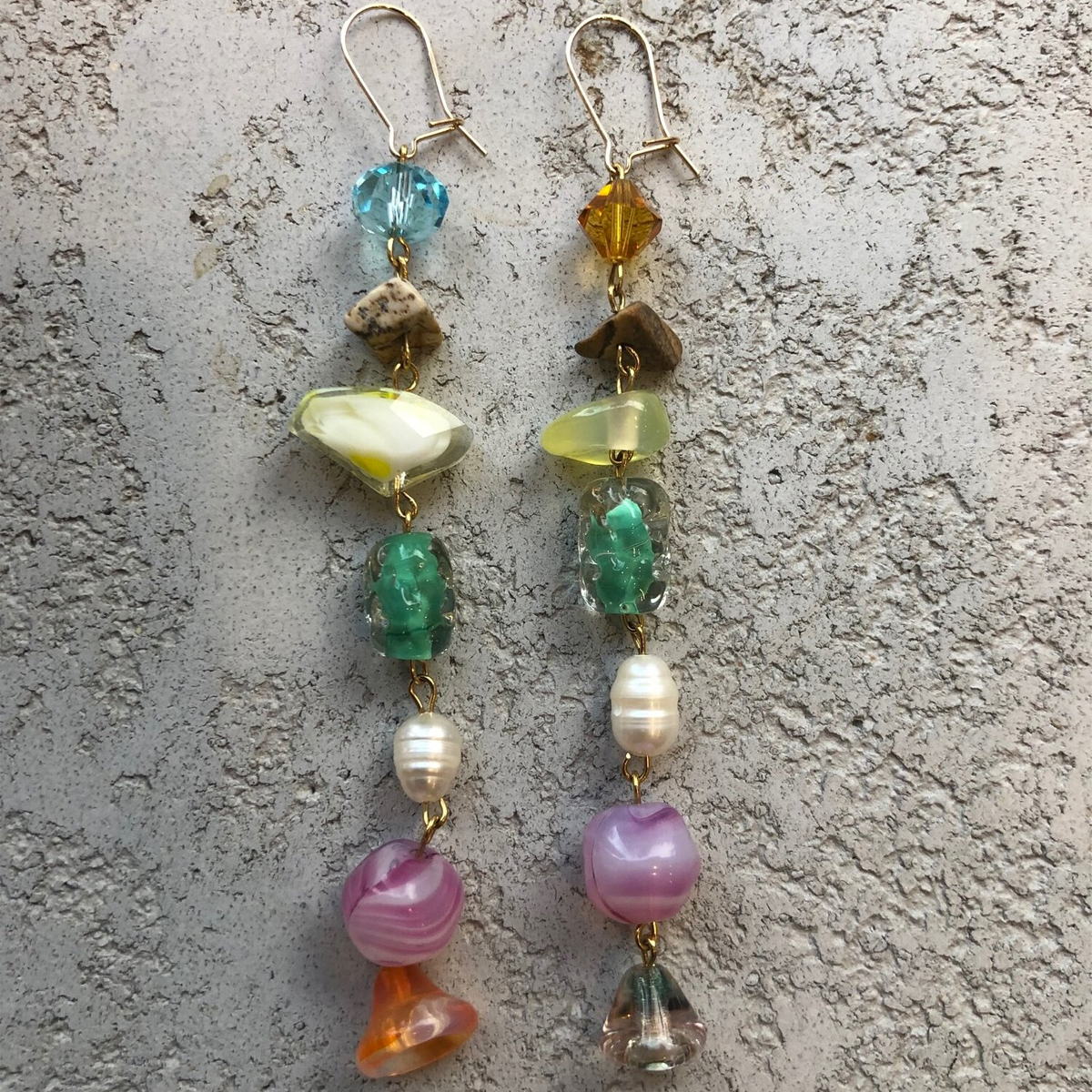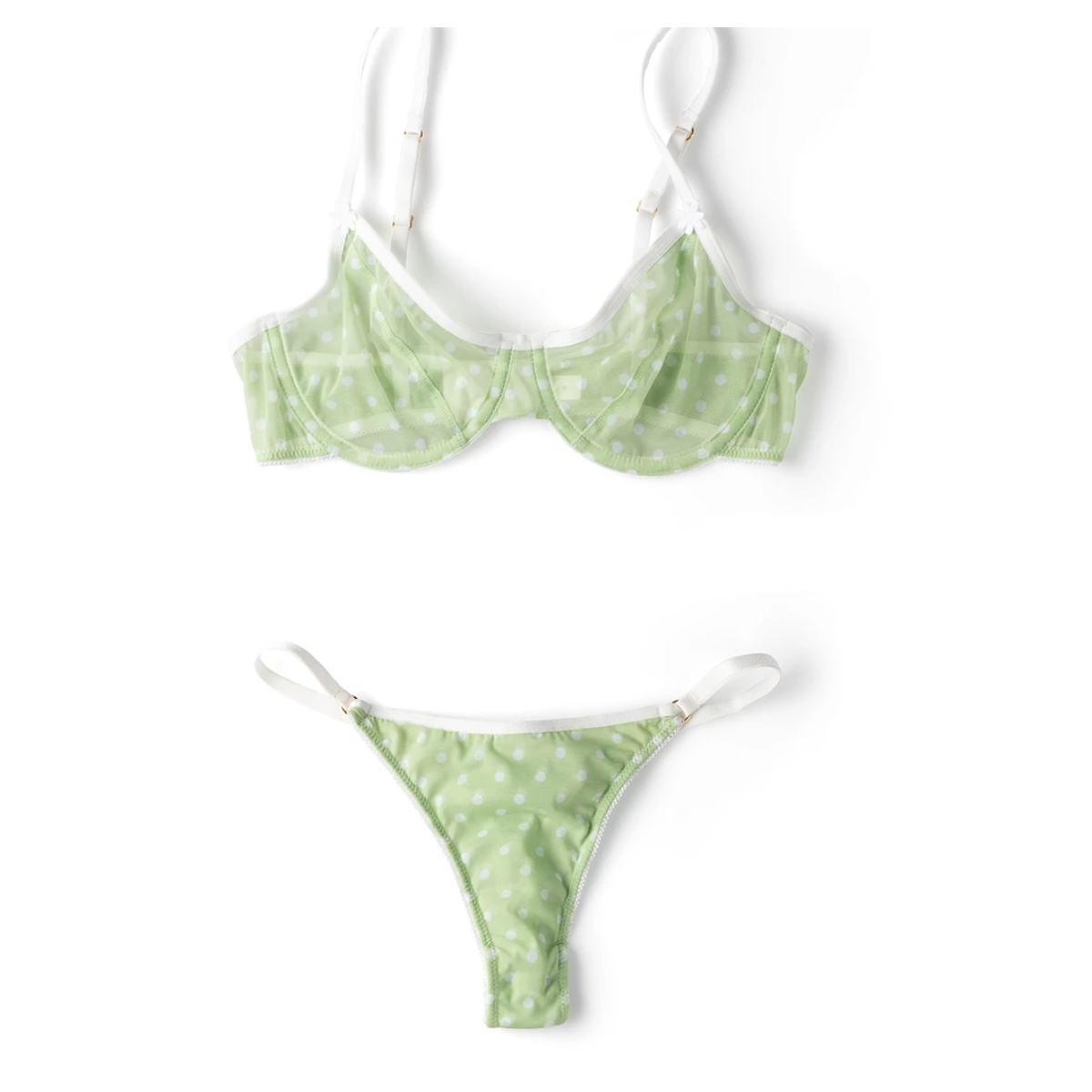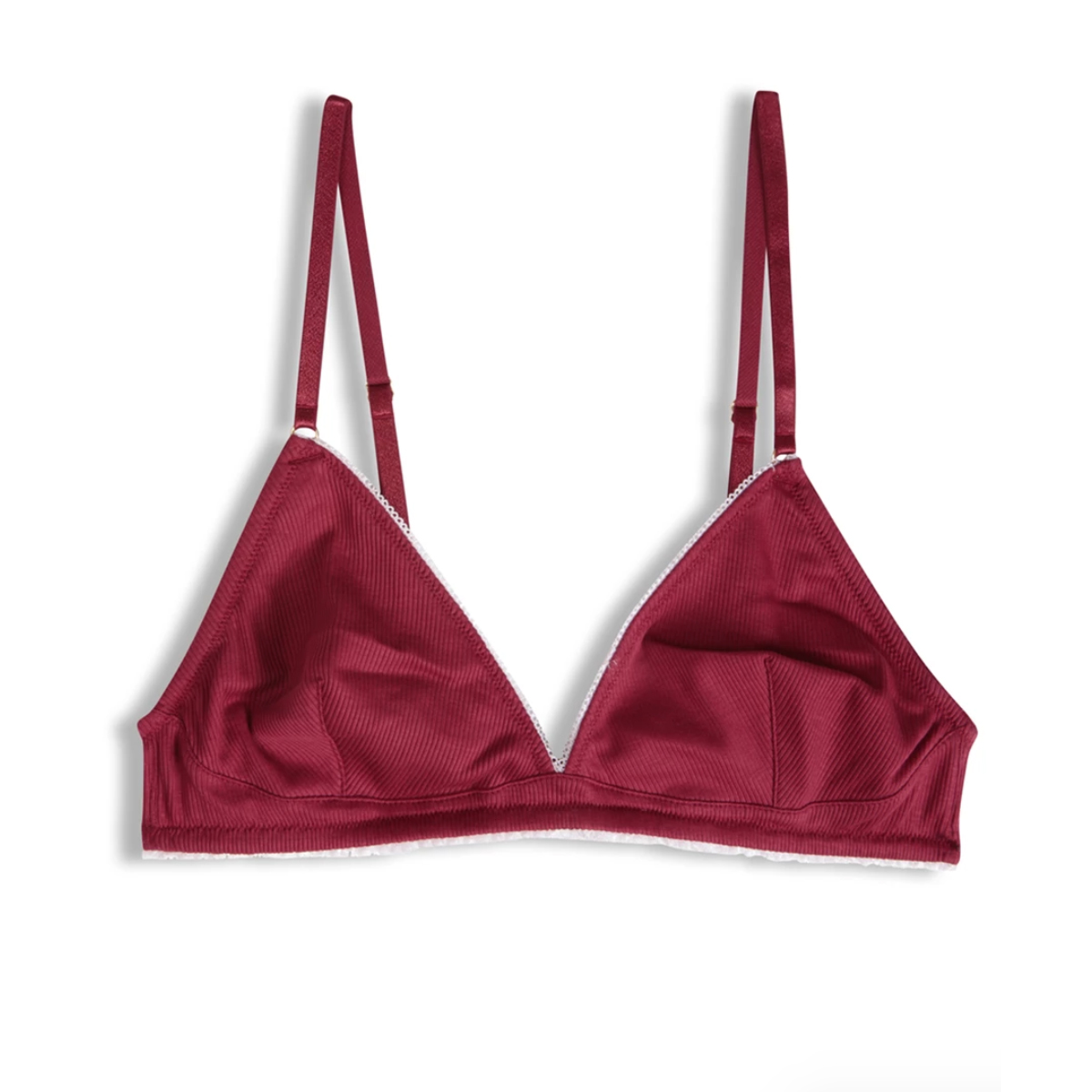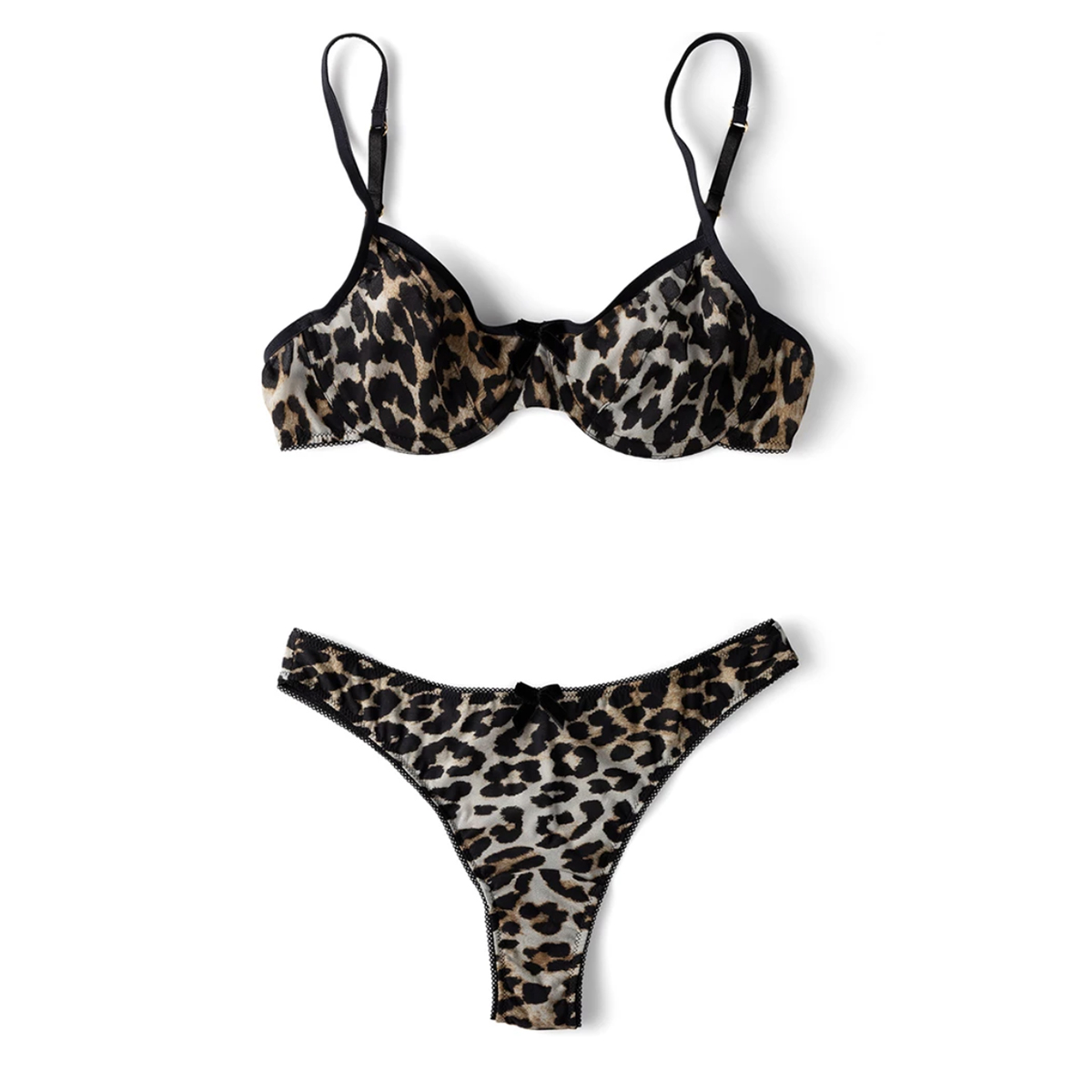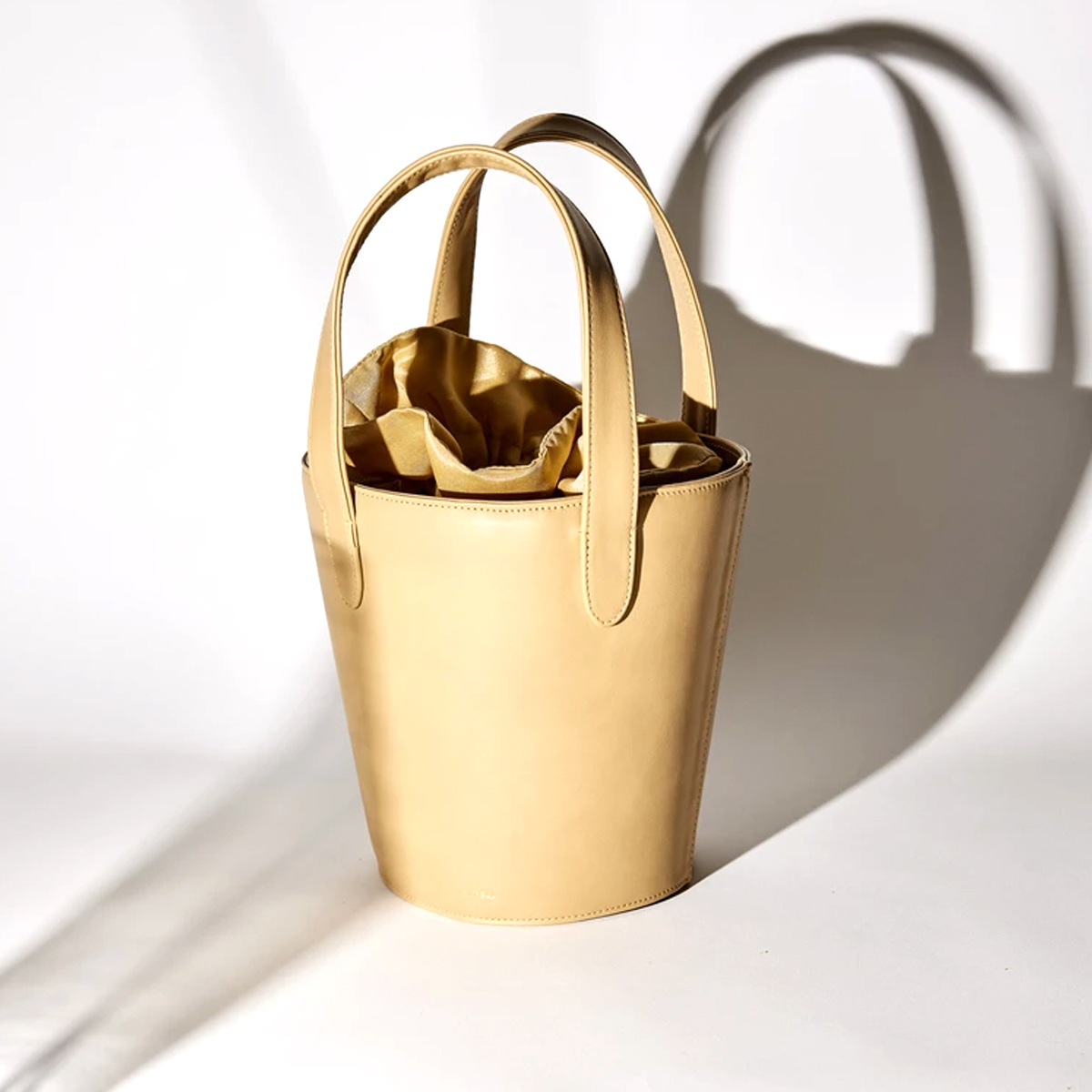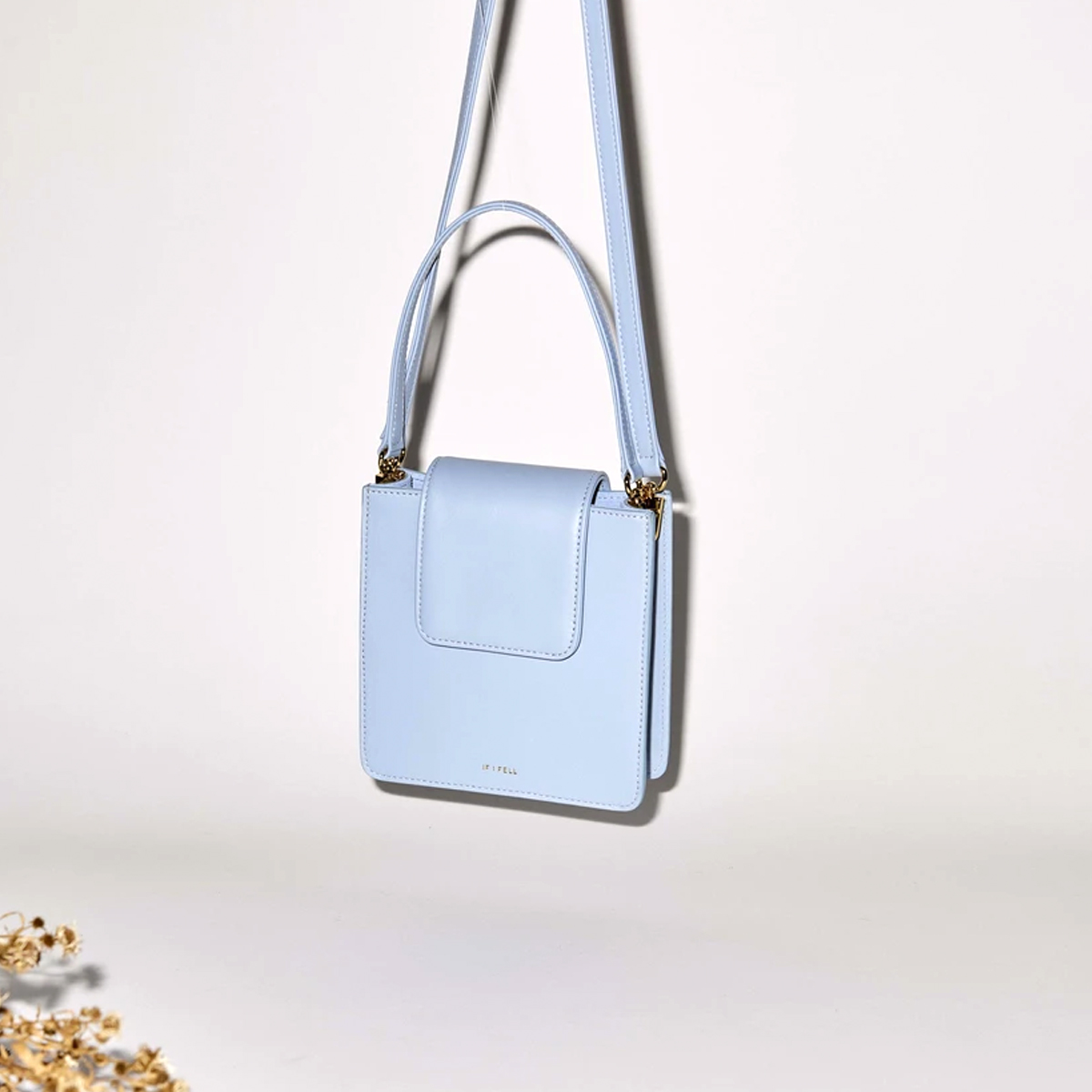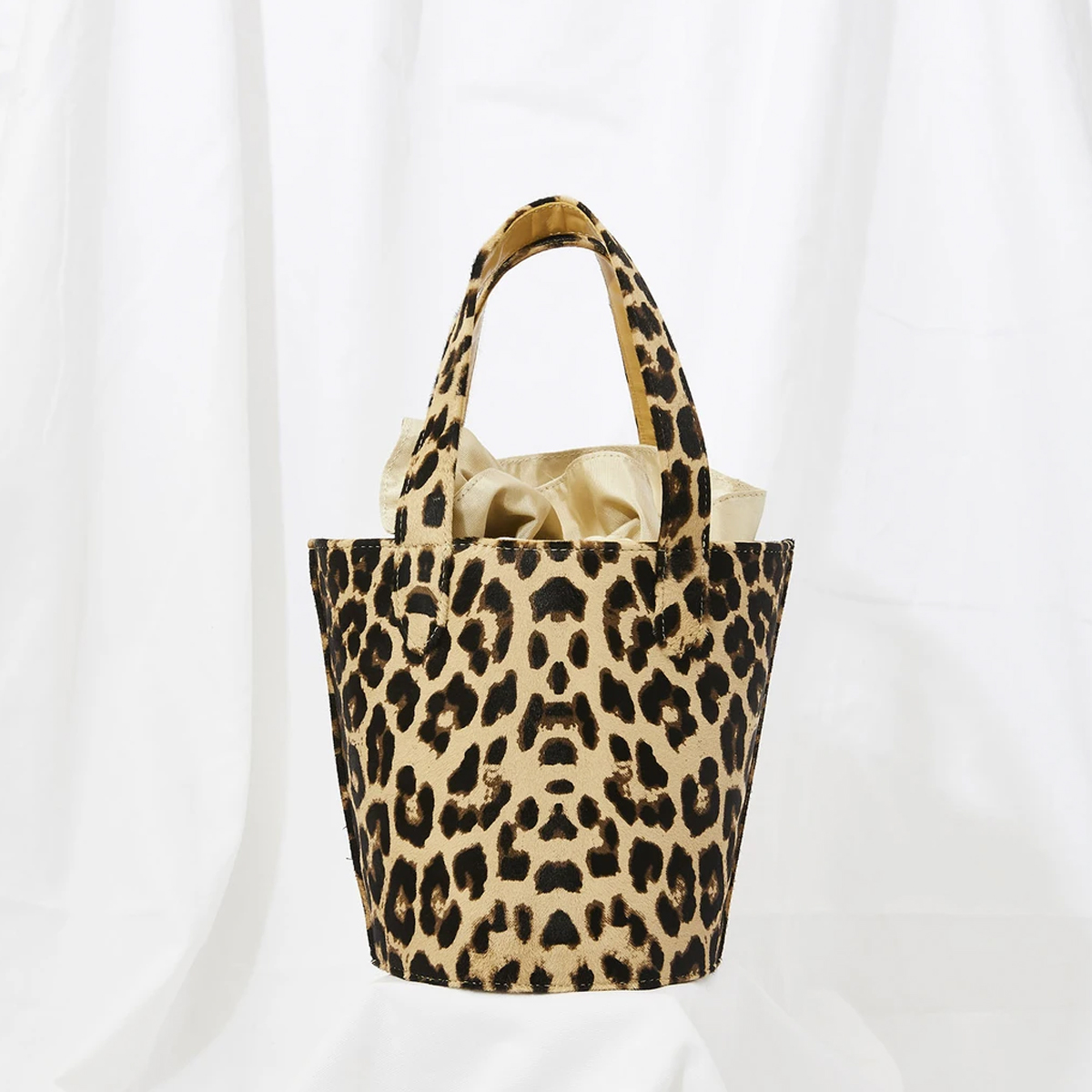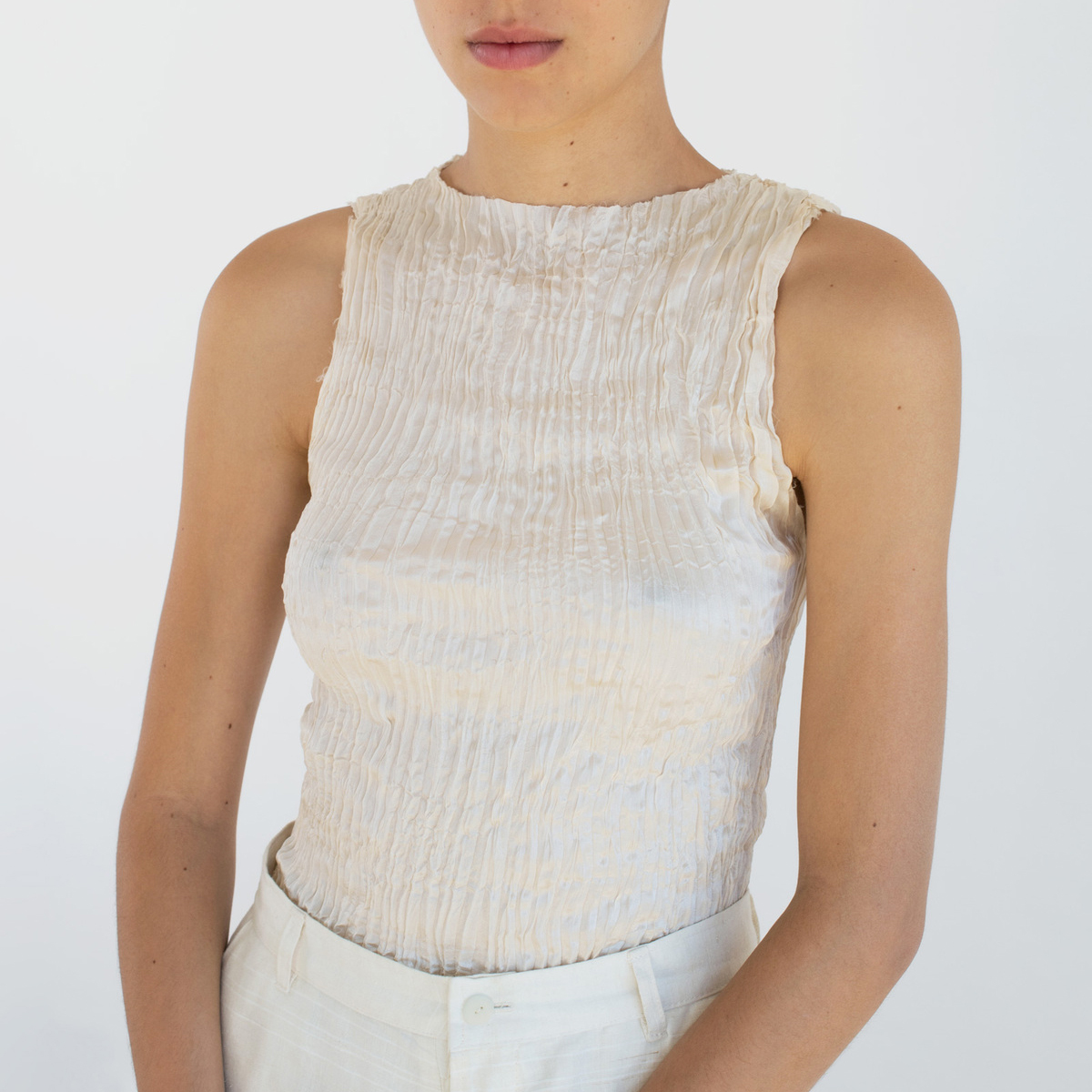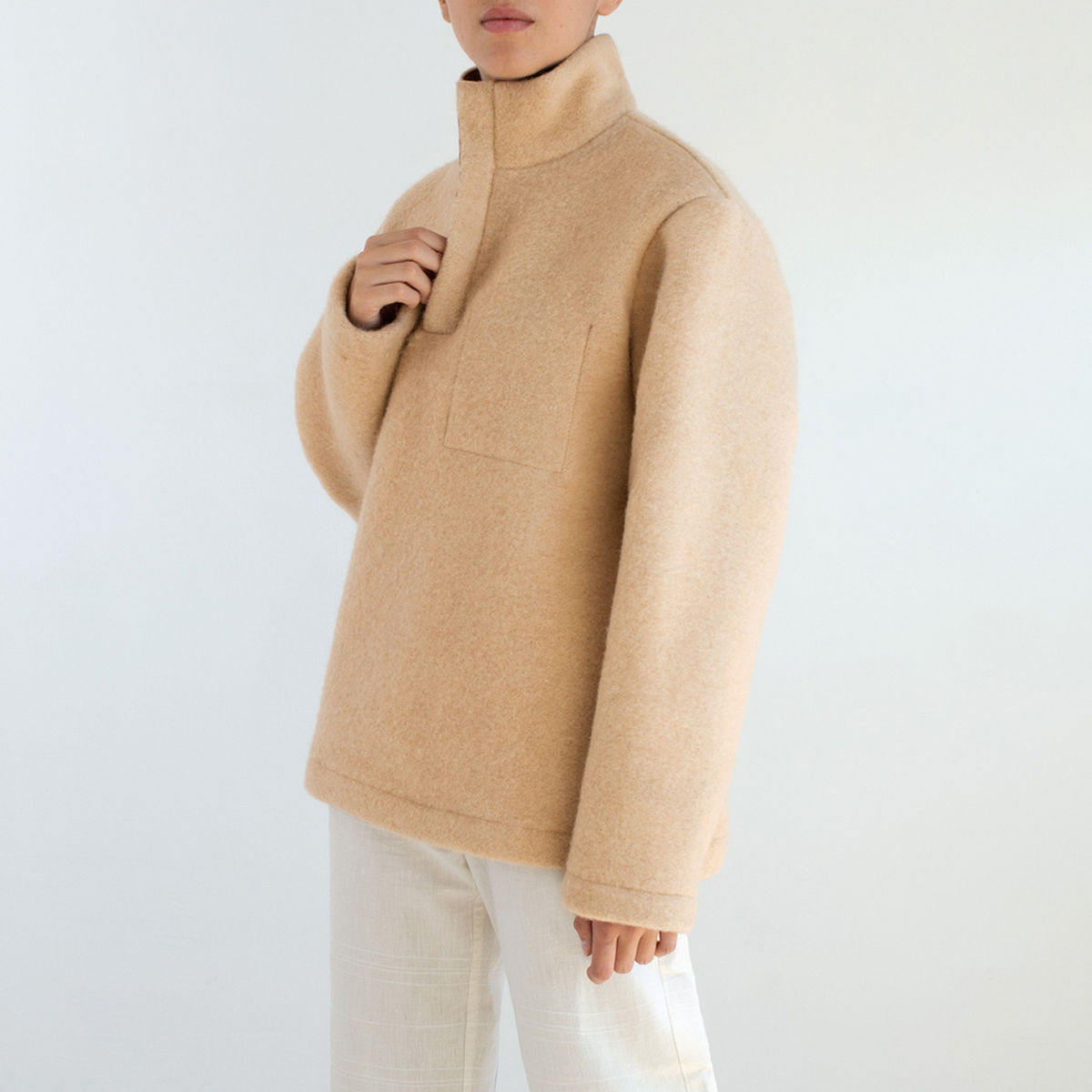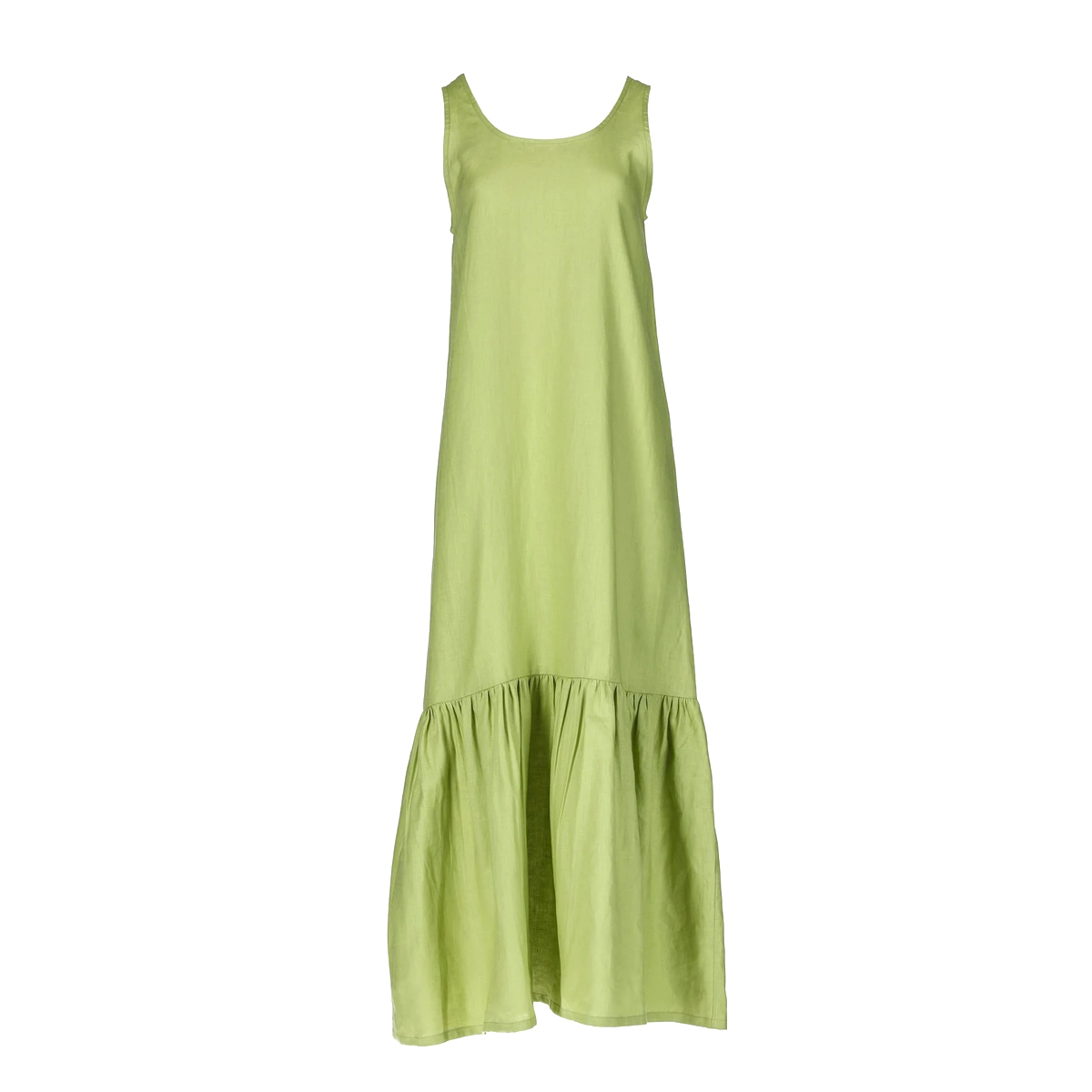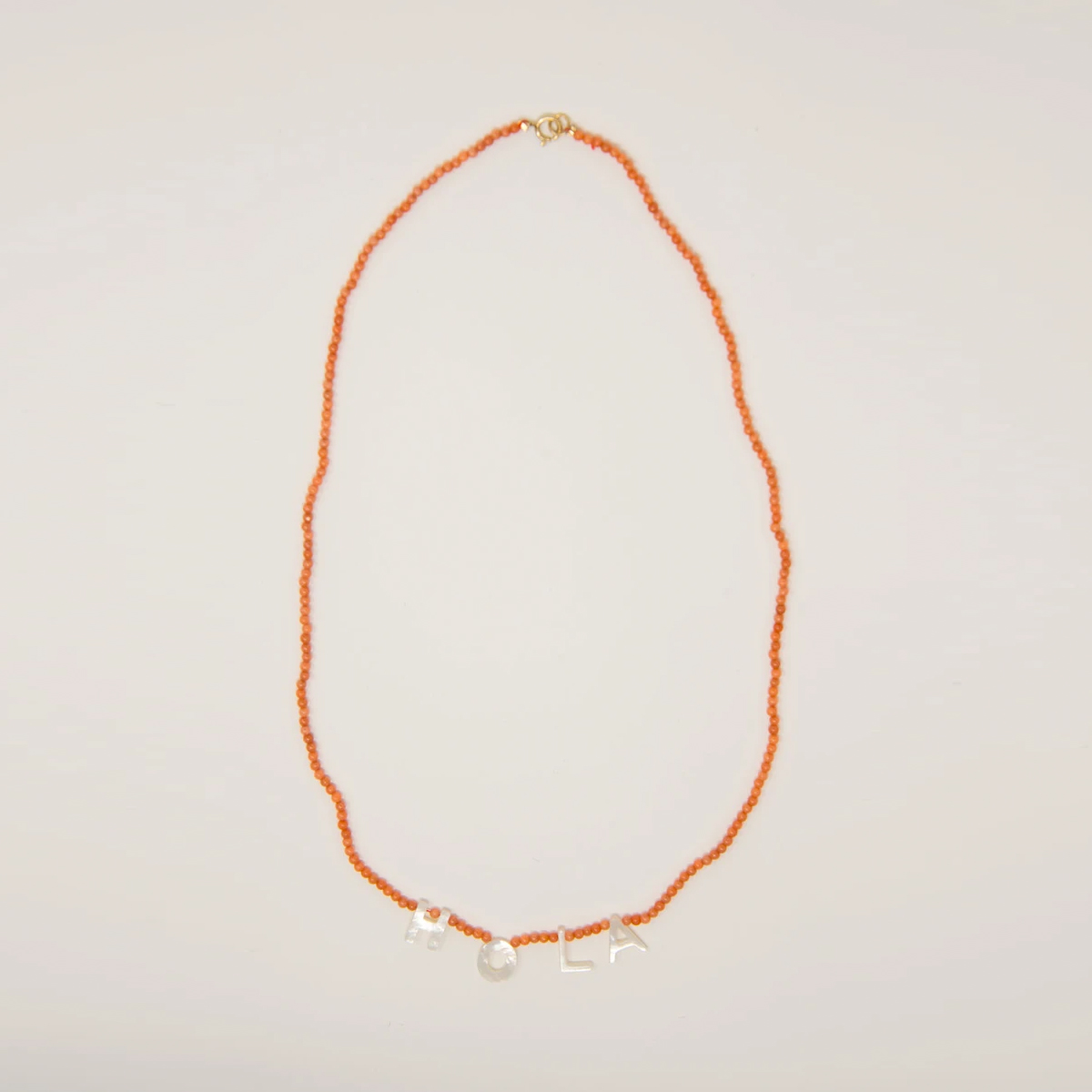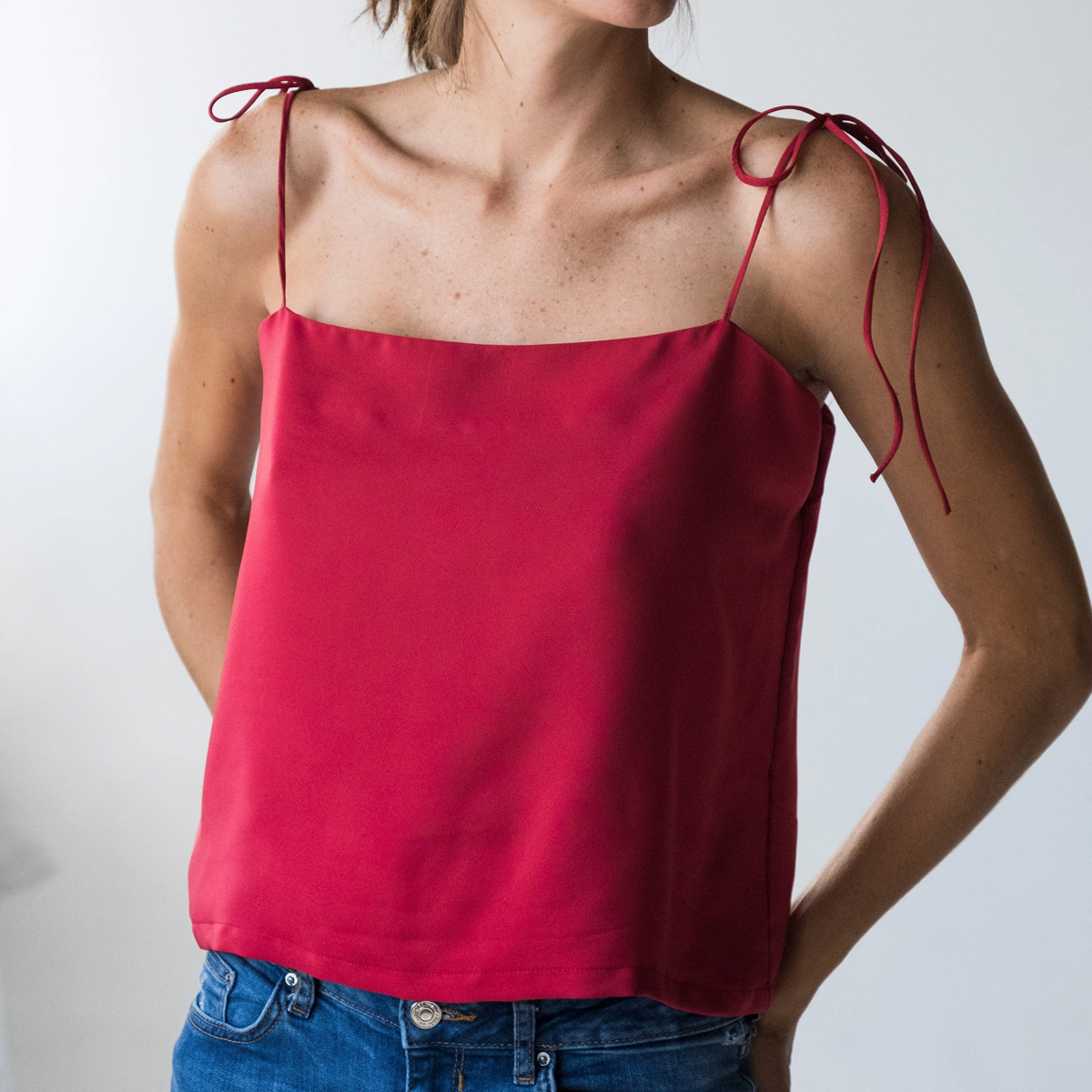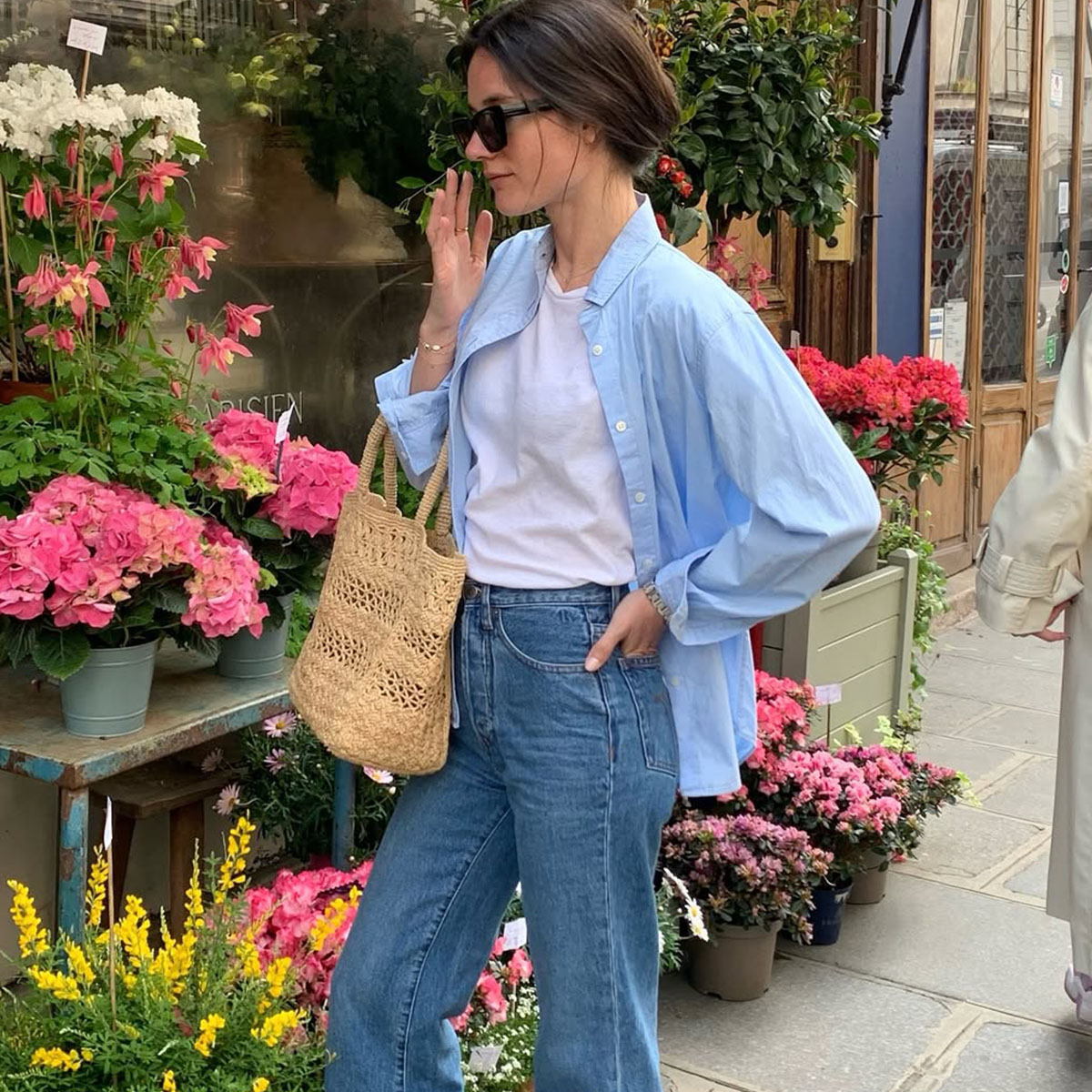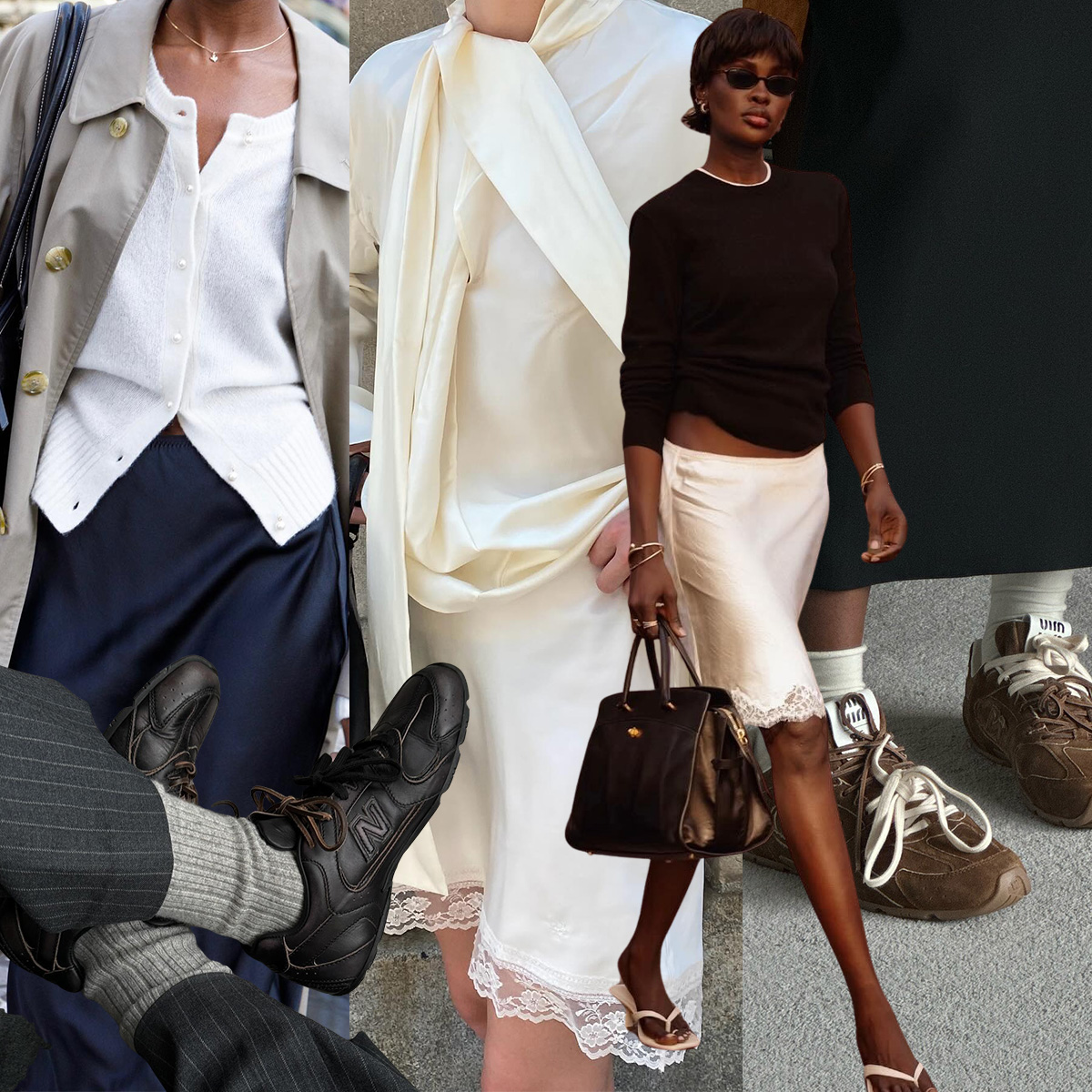7 Small Brands on How They're Acing Sustainable Fashion
My love of finding small brands on Instagram has introduced me to some truly inspiring and diverse designers, a lot of whom hold the issue of sustainability as close to their hearts as I do. For them, sustainability and fashion can co-exist beautifully and can actually create some incredibly innovative ideas. Small e-commerce shops, like the Sustainable Department Store, inNEOSS, and Joan the Store, have been bringing these brands and voices together, showing that by collaborating and supporting each other, we can show that sustainable options are there.
To round up the year that sustainability finally caught the attention of the mainstream industry, I thought I'd return to the small brands, the first of the many voices to bring sustainability to the forefront of the fashion conversation. I asked seven women who run "sustainable" brands the same questions so they could share their unique thoughts on the subject; how they run their brands, lingering myths about sustainability they hope to dispel, what the future of fashion holds.
The result is, I hope, to bring a human side to what the elusive phrase "sustainable fashion" can look like. From collaborating with friends to re-thinking fabric supply chains, there's so much to learn from these designers. Keep scrolling to be introduced to seven women behind brands I admire for their beautiful approach to sustainability.
NEOSS LONDON
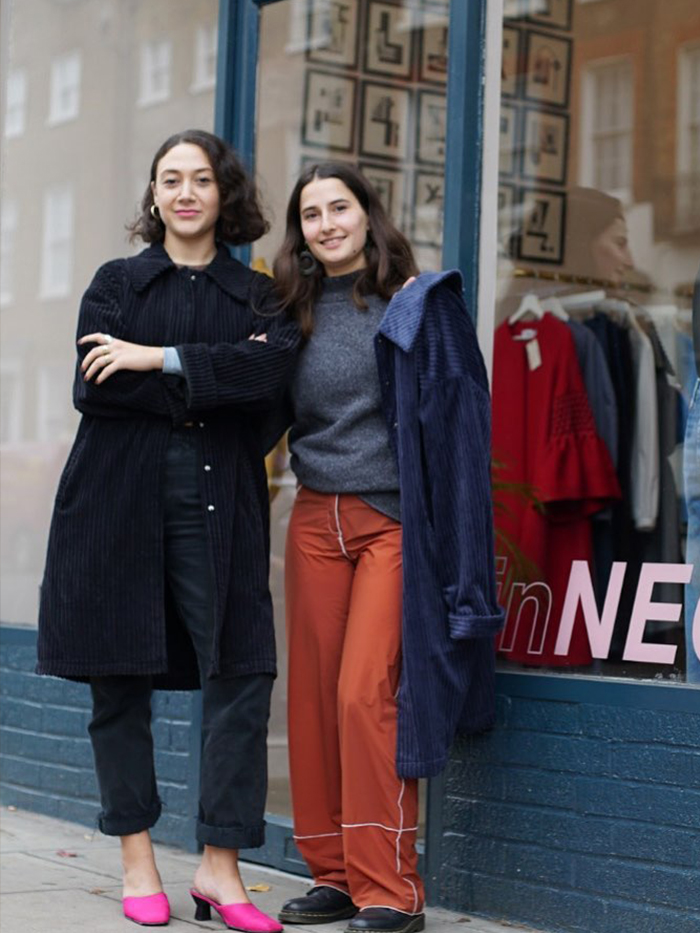
Georgie Charalambous and Natalie Bouloux are London-born and based best friends and co-founders of Neoss. In 2017, they opened their multi-brand shop, inNEOSS, which supports other small brands.
How does sustainability weave into your work?
We have always tried to keep our impact on the environment to a minimum. We started the brand from a spare bedroom in Natalie’s home, and our production hasn’t really changed; a lot of our pieces are still made in that room by us in small quantities and most are made to order so we aren't left with dead stock. For small runs of clothing, we use a family-run factory, local to our studio, to minimise our carbon footprint and so we can oversee production. Currently we use deadstock fabric in our clothing and bags so we are not creating demand for new fibres; we use our offcuts and rework them into new products so we can reduce waste.
How does being sustainable impact your creativity?
Being fully sustainable is a pretty impossible task in this industry! So working towards that as an end goal of course affects our creative process. We have never rushed into collections. In the five years we have been a brand, we have only ever released two clothing collections and a set of accessories. It's important to us to only make [something] when we really believe in a design and think it has the durability to be transferred from season to season for years. The corduroy coat, for example, was born three years ago, and we sell them to this day.
The hardest thing for us has been fabric. There are so many more places you can get sustainable fabrics now, but you hear a lot of contradictory advice on which is better for the environment. Ultimately we would like to be a circular business clamping down on all waste. One of the other hurdles as a small business is that sustainable materials often cost a lot more as they aren't in as high demand and because of the way in which the high street has dictated the way people shop, we are often challenged as to why things cost what they do but with that challenge comes opportunity to educate. Now having a store, it is so great to be able to talk to our customers face to face and explain to them the hard work that has gone into the garments we sell. Being able to share our brand's stories is also a really lovely thing.
What are any myths about sustainability you hope to dispel?
That sustainable clothing and accessories are boring—our shop is proof it's not! We have so many diverse young brands coming from sustainable and ethical places.
For emerging designers or designers looking to be more sustainable, can you offer any advice?
It can be overwhelming especially with sustainable components being more expensive, but if you take things slowly and make small changes it can make a big difference. Do your research on your fabrics and don't produce huge quantities, start small and build it slowly and sustainably. Make sure the quality is there in your production so that your pieces have a long life span. Always be thinking of new ways in which you can improve on the impact you are having on the environment. Develop your brand story so that people want to invest in it and cherish your pieces.
What’s your hope for the future of fashion?
That it slows down; the need for new things all the time is driven by endless fashion weeks and high streets overproducing unsustainable cheap clothing. Accountability for those big brands who are overproducing and a change in our perspectives as consumers to invest in pieces that we look after and mend for years might force the change that is needed in this industry.
Brands Georgie and Nat love:
SHOP NEOSS
ROOP
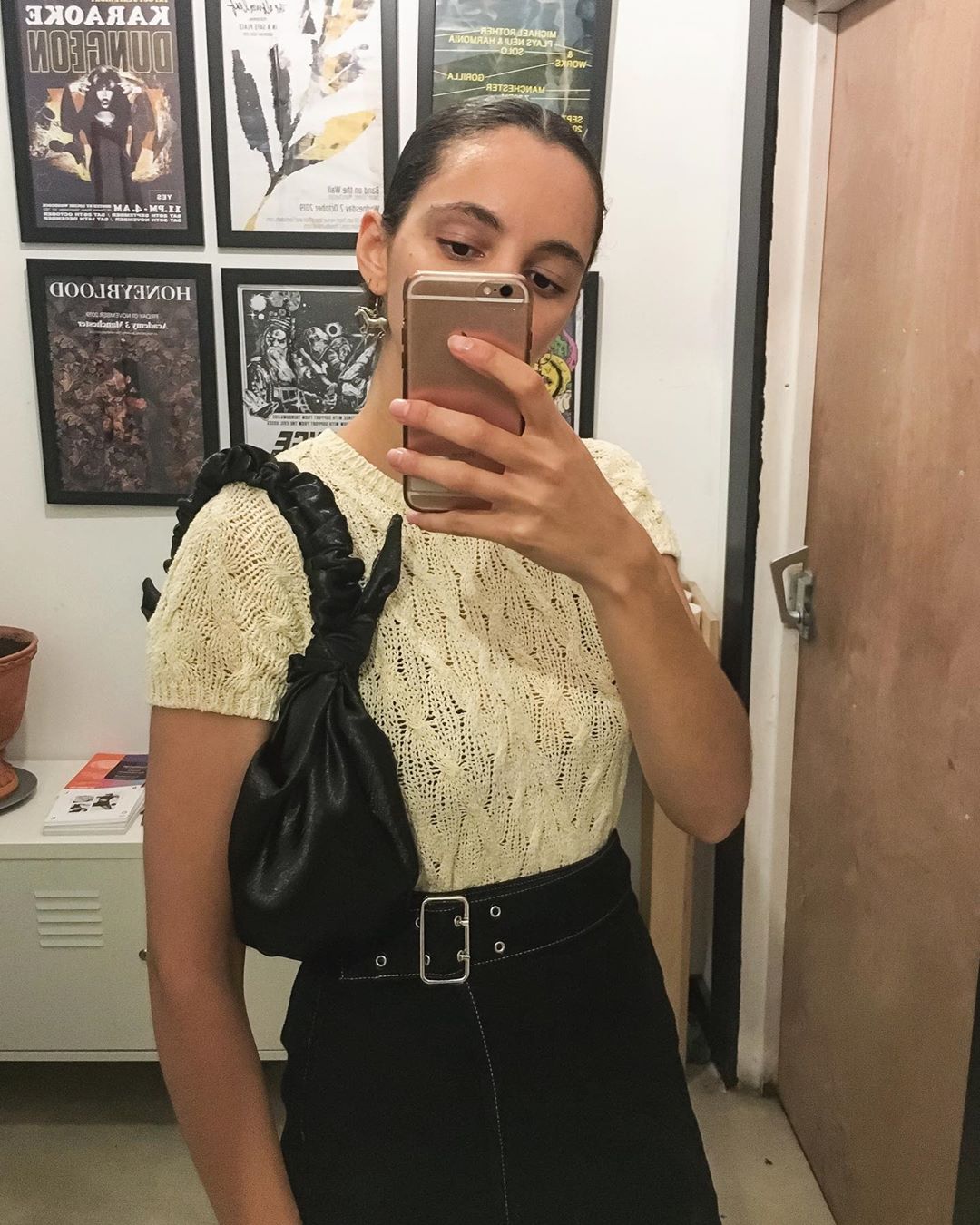
Founded by Natasha Fernandes Anjo earlier this year in Manchester, Roop is a one-person team that exclusively makes one bag style.
How does sustainability weave into your work?
Sustainability is key to my whole brand ethos. I only use remnant, deadstock or vintage fabrics for the body of the bags. I’m really trying to utilise what is already here. I even extend this to my own studio, I try to be as low waste as possible, patching elastic and fabric to make sure it goes as far as possible.
How does being sustainable impact your creativity?
It definitely makes me more creative. Because all my fabric is odds and ends basically, I try to use a much as possible so as not waste any of the fabric because I never have that much of it. I choose a lot my fabrics based on their colours and prints, not their composition. I can't make traditional furoshiki bags with a lot of these, so I have been working away at new designs to be able to use these incredible textiles. It makes you a great problem solver and quite precious with your resources. I think if I had access to rolls and rolls of fabrics maybe I wouldn't be as conscientious with my design.
What are any myths about sustainability you hope to dispel?
That it isn't mass market or beautiful. I think I disprove that myth. The brand Actually Existing also demonstrates modern and creative design using traditional crafts with reclaimed and saved materials.
For emerging designers or designers looking to be more sustainable, can you offer any advice?
For established brands and designers start small, pick one product or one process and try and make that more sustainable. And for new designers don't form any bad habits in the beginning, choose wisely and be thrifty! Necessity is the mother of invention, and I think that’s the ethos behind a lot of sustainable brands today. We’re all looking to make use of what has been left over or what seemingly can’t be used for fashion, and it makes for some truly amazing things.
What’s your hope for the future of fashion?
That people step away from the idea of disposable fashion. Especially since I started Roop, I want people to love my bags and form a connection with them; if and when that connection ends, pass it on and not throw it away. I am loving the all the emerging renting platforms and all the love for vintage and second hand at the moment. We seem to have this need be shiny and new all the time, and these new renting companies seem to be the antidote to that notion and its exciting.
Brands Natasha loves:
Olivia Rose the Label and Susan Alexandra
SHOP ROOP
SISI JOIA
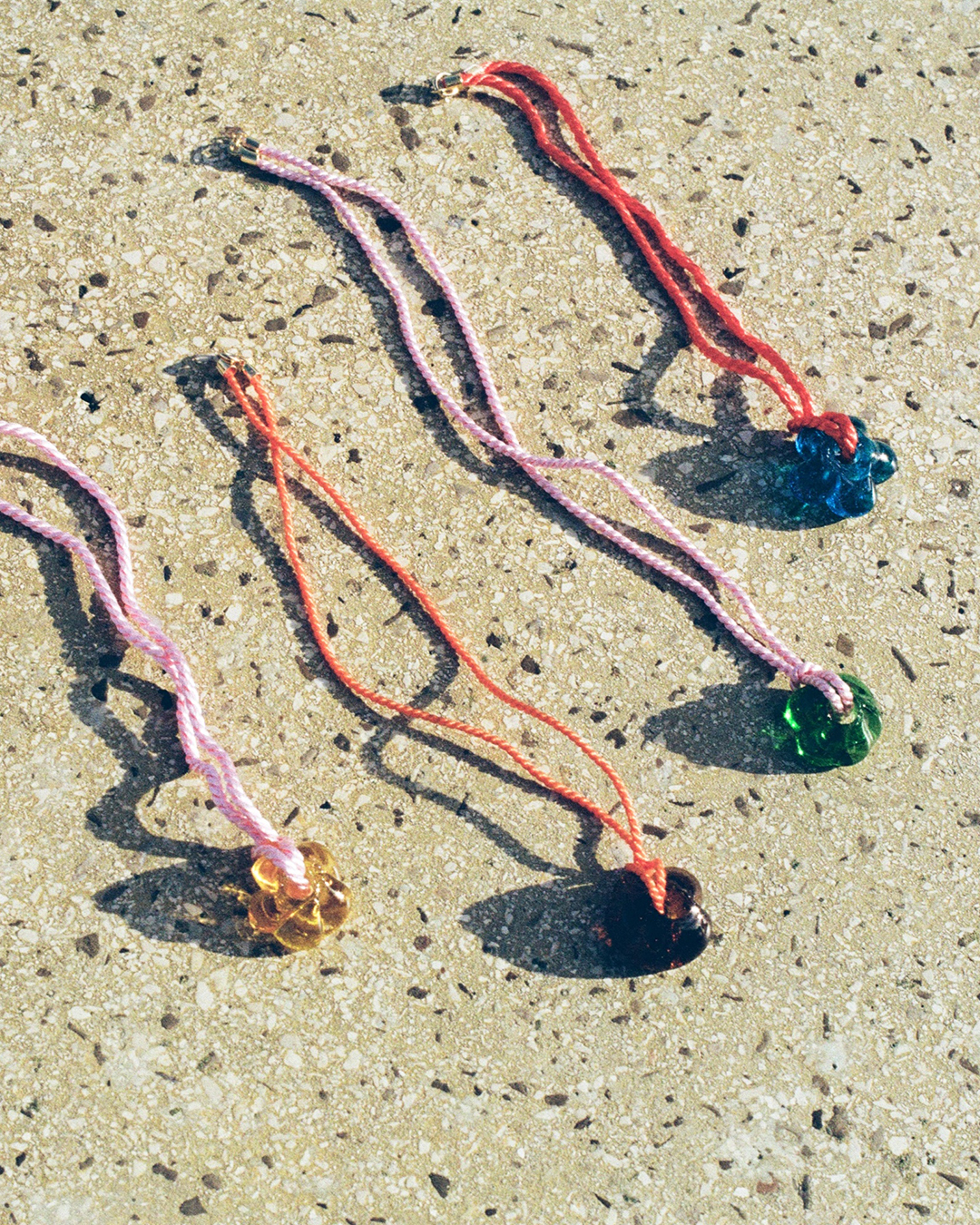
Cécile Wallon runs her jewellery brand, Sisi Joía, with the help of her husband and 2-year-old son. Each piece is made in Paris using found glass from Syria.
How does sustainability weave into your work?
I make everything to order by hand, with vintage beads that I source myself, and with recycled glass beads. I source recycled kraft boxes, and I use recycled shredded kraft to pack my orders.
How does being sustainable impact your creativity?
It doesn't, because it all started with the vintage beads I sourced, so all the creative work departs from them. It's the same with the recycled glass from Syria; I work from the beads to create the pieces.
What are any myths about sustainability you hope to dispel?
I think now the myths are almost all gone, at least for the younger crowd that doesn't even consider it as a thing that could restraint creativity. But one thing remains, and that's our responsibility as little brands to show that sustainable doesn't have to be super expensive. Because when you're small, your costs only are the production costs; you don't have stores or a thousand of employees to pay.
For emerging designers or designers looking to be more sustainable, can you offer any advice?
For emerging designers I guess they can produce small quantities and source materials locally. It's easier when you start producing this way because you build your model from this way of producing. For bigger brands and designers, the advantage is they do have the money to source sustainable fabrics, but they might have to review their margins and profits to maintain accessible prices.
What’s your hope for the future of fashion?
I'm super optimistic. I think people will be more and more careful and demanding regarding the way their clothes are produced, and that really careful brands will have a special place in the market.
Brands Cécile admires:
Azur and Paloma Wool
SHOP SISI JOÍA
FRUITY BOOTY
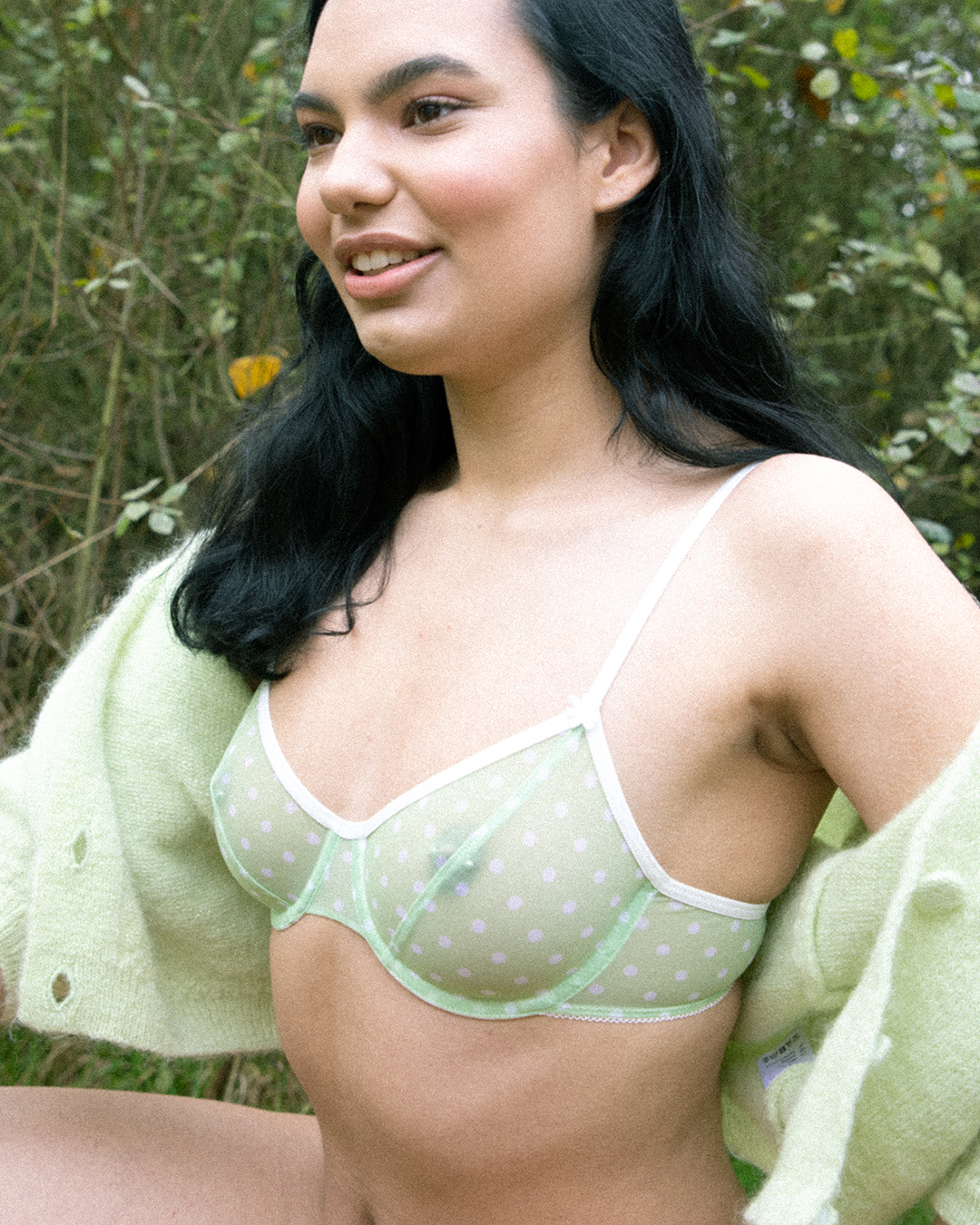
Minna Bunting co-founded lingerie brand Fruity Booty with her long-term friend Hattie in London last year. They have two other full-time employees, Magda and Siena, and hire the rest of their team on a freelance basis.
How does sustainability weave into your work?
Sustainability is involved in every single process of the work we do. From the fabric that we source, the quality of production, the waste-free packaging, and to the transparent message we constantly try to convey throughout our social channels to our consumers.
How does being sustainable impact your creativity?
I think being sustainable genuinely increases creativity, as it forces us to think in a more original way and come up with creative ways to utilise resources that already exist.
For example, when it comes to packaging, instead of getting a beautiful, logo-covered gift box, outsourced to be made cheaply with lavish tissue paper and stickers, we have found ways to pack up our orders beautiful which our 100% recyclable materials. We even have considered using old fruit wrappers or paper made from fruit compost.
What are any myths about sustainability you hope to dispel?
That sustainable products are not sexy.
For emerging designers or designers looking to be more sustainable, can you offer any advice?
Be 100% transparent and understand every single process involved in creating your pieces. Spend time in the factory where they are made, know and question where your fabric is coming from, and always create quality pieces with the intent of making that product last.
What’s your hope for the future of fashion?
People need to research and question all brands they choose to purchase from. We hope that consumers move away from fast fashion and mindless purchasing and support independent designers whose values align with their own.
Brands Minna and Hattie admire:
SHOP FRUITY BOOTY
IF I FELL
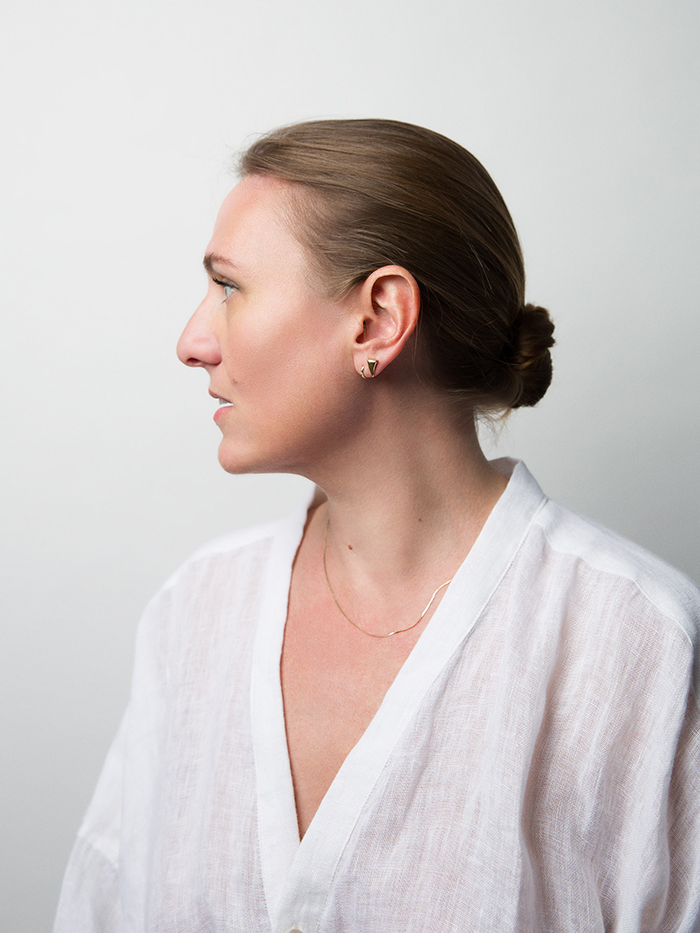
Ashli Parker Fell is the designer and creator of handbag brand If I Fell. She began the business one year ago in New York and runs it on her own, looking to collaborations for support.
How does sustainability weave into your work?
We design and produce locally with a positive and hands-on transparent process. This avoids extra shipping during the development process through to delivery, packaging and other industry waste we would not be able to control if working overseas.
We create using unused leather from larger luxury brands and our suppliers work hard to accommodate those differences—being able to work with the different leathers within one small order. These suppliers are in line with our ethical ethos by allowing small batch production and innovative ways to make a variety of colours per style without disrupting the production process.
Most If I Fell bags are structured, and they are all made to last. Those styles use a filler layer that is created from recycled, ground-up leather scraps then bonded into sheets. This layer is adhered to the leather within the construction of the bags. We are currently sourcing new hardware and accents for the bags that are made from recycled materials. This is called circular design.
How does being sustainable impact your creativity?
Creativity is endless, so having those parameters actually helps focus the creativity. It is very easy to use a beautiful embossed leather or a custom print or hardware to make the bag. Having to use available materials in certain amounts expands the original thought or idea into something more special.
What are any myths about sustainability you hope to dispel?
Sustainability is an ambiguous term that is now a bit overused in the industry to be more attractive to consumers. The larger your demand, the harder it is to be able to control your footprint and waste. Using a recycled yarn or re-using water, is a start, but doesn’t necessarily make you an eco-friendly brand. Some claim to be "sustainable" but are owned by larger conglomerates that are overproducing or using non-ethical suppliers, so it defeats the initiative of being "sustainable.”
When it comes to leather, most vegan leathers are essentially plastic and are toxic, even in the recycling process. They also fall apart, flake and end up in landfills. Raising animals for leather has an environmental cost but leather lasts a lifetime and more. We use existing leathers and materials – designing products that customers will use and cherish forever.
For emerging designers or designers looking to be more sustainable, can you offer any advice?
There are many ways designers can be responsible in manufacturing, whether it's saving fabric from landfills or making them locally, for example. I would say start with something that is going to make a difference, something you feel passionate about. Do your part and do as much as you can. Its lifestyle and your brand and voice will reflect that.
What’s your hope for the future of fashion?
We are already heading in a better direction, I believe and hope! Brands are getting more creative with their businesses and drifting away from traditional seasons and collections. Consumers are now demanding transparency and want to know where the products come from, so brands have no choice but to be ethical and responsible, in order to stay in business. The younger generations are the future, and the current social issues have a huge impact on this industry for the better.
Brands Ashli loves:
Lady Lancaster, Babaà, The Shoe Archives and The Real Real
SHOP IF I FELL
AZUR WORLD
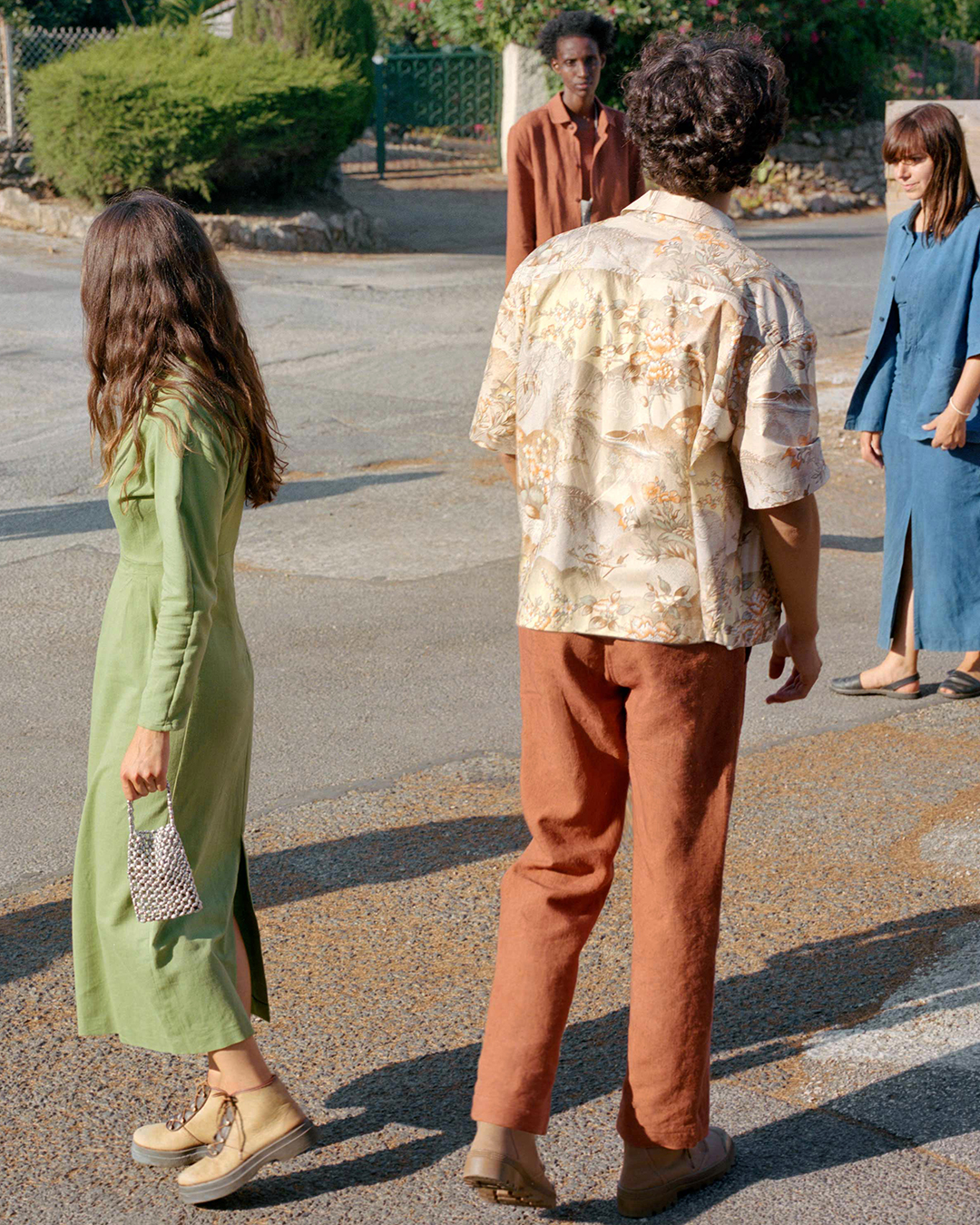
Lisa and Lisa co-founded Azur World after years of questioning their work. They moved from Paris to Marseilles to decentralise design from Paris and to live and work by the sea.
How does sustainability weave into your work?
To avoid overproduction and enhance existing raw materials, we source high-quality natural antique fabrics woven in France in the early 20th century. Fabrics and buttons are naturally hand-dyed with dye plants by us in our studio, using no chemicals or heavy metal. Our 100% cotton thread and natural corozo buttons are made by the last French sewing thread mill and the last button manufacturer in France. Except our labels, which are made in Italy from recycled plastic bottles, we avoid any plastic. The lining of our clothes is made of cotton without glue and our packaging is made in France with recycled and recyclable materials. Each piece is sewn in Marseille by our prototypist or a garment workshop run by a mother and daughter. Our silk pieces are hand-pleated in Marseille in an atelier running by two sisters and owned by their family since 1937.
How does being sustainable impact your creativity?
The major part of our creative result is inherent to the artisanal process and the sustainable approach we have set up. The sourcing of our raw materials is the biggest constraint and restrict many of our desires. We have to reverse the usual creative process. First we list what and how we can produce following our ethos, and then, we start the creative process. We are aware that not everything can be produced within our constraints, which can be frustrating sometimes, but which is also really challenging and exciting.
While imagining the first collection, we had in mind a soft knit pullover in fine gauge we really wanted to produce for winter. After contacting different factories in France and Italy, we discovered that with the fineness of yarn that we wanted, the factories only use wool from Australia and New Zealand, which is a pity when knowing how important French sheep farming is. We decided not to make knits as long as we can't find a supply chain that is 100% in line with our ethos. Our next challenge is to make this possible even if it means re-creating a local chain. At our small scale, it's difficult to modify the production circuits.
What are any myths about sustainability you hope to dispel?
There are a lot of myths but above all a lot of misconceptions behind sustainability. "Made in France" and "natural fibers" doesn't make it all. Selling a sweater made from Australian wool, when France has so much wool. Making clothes from haute-couture leftovers fabrics, making you 100% dependent from a billion-dollars industry still quite opaque on much of its materials traceability and a big part of its production. Certified organic fabrics made from linen grown in France, sent to China to be spun and sent back to Europe to be woven and ends up being sold with absolute no information about the dye… No one has the perfect formula, and both makers and designers should work together to build fairer and cleaner making processes.
For emerging designers or designers looking to be more sustainable, can you offer any advice?
What we have learned from the past year while turning the issue of sustainability upside down, is always having in mind these three key questions: ethic (made by who), local (made where) and ecological/green (made from what) and always striking the right balance between these three while making choices for your brand. Having in mind, that nothing can be done perfectly but everything can be done in a better way. If you have the feeling you will compromise your ethics and ideals by making a certain choice, don’t do it.
What’s your hope for the future of fashion?
We hope for greater awareness of the consequences of the fashion industry and consumerism for the environment, as it is maybe more the case in the food industry. We have hopes and dreams for the future of creation in general. We would like to see a return to local creation, to craftsmanship and that would no longer be a luxury. We believe in the beauty and value of things that have a history.
Brands Lisa and Lisa admire:
Bode and Atelier Usages, run by Philippine and Guillaume in Romans-sur-Isère
SHOP AZUR
NORTE WOMEN
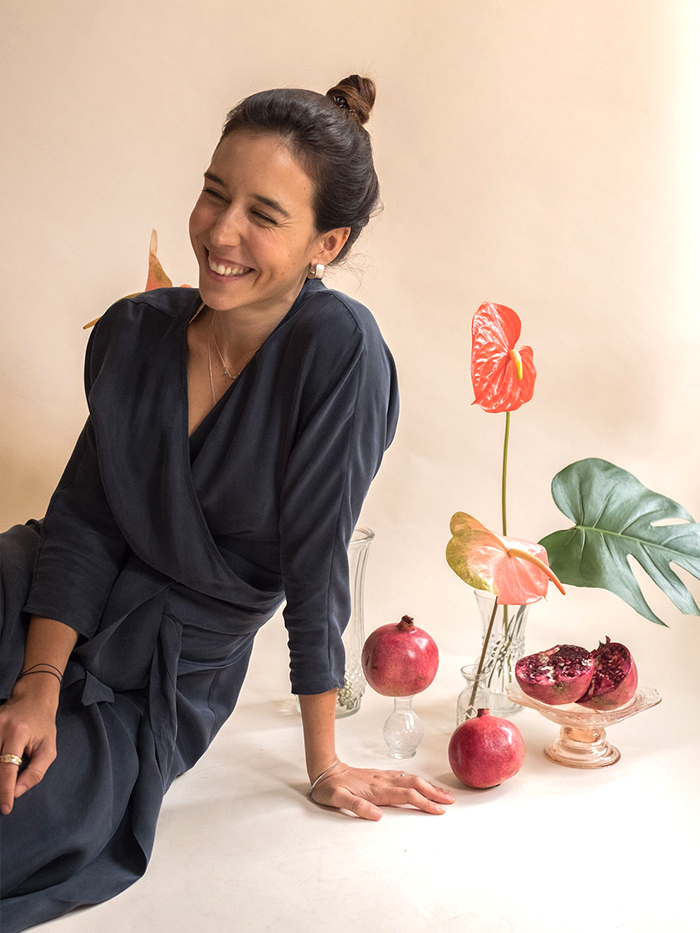
Inès Vieira is Spanish-born, New York–based designer and the founder of NORTE and runs the brand with her husband, Alex, and two part-time employees.
How does sustainability weave into your work?
Sustainability for us is a holistic process that impacts everything we do and how we do it. I have always loved clothing, but Norte started because I wanted to create a safer, more sustainable way of creating beautiful garments as well as educate consumers about the importance of sustainable fashion.
How does being sustainable impact your creativity?
Our mission of sustainability has a profound impact on the creative process for me. First, and even though there are more and more every day, my options of fabrics to choose from are much smaller. Sometimes I find an amazing fabric and I come up with many ideas for how to use it only to realise during our investigation of the fabric, that it is strongly chemically dyed (for example) and I cannot use it.
Another way it affects the process is that it makes me consider whether a design is timeless. I must always consider whether I would still like to wear a certain design five years from now. Although one could say it limits the materials and designs that I can work with, these challenges also make the process more interesting and fulfilling. They force me to be more creative and ultimately come up with a better product than I otherwise would have.
What are any myths about sustainability you hope to dispel?
Sustainability in fashion is tricky because it includes a wide range of concepts. One of the most important for me is fabric composition and there is a lot of misunderstanding around that. For example, many people think that a fabric is sustainable as long as it is natural. This, however, is not necessarily true. For example, regular cotton is natural, but it is not sustainable at all as it requires a lot of water to produce (up to 2700 liters to make one shirt) as well as the usage of many pesticides that end up in your clothes and also damage the soil, water and the natural resources in the area.
For emerging designers or designers looking to be more sustainable, can you offer any advice?
I am still learning every day, but I think that sustainability can be extremely overwhelming if you try to do everything 100% perfect from the start, so I recommend starting small. For example, find one great fabric that you like and use it for all your pieces, don’t go crazy trying to create a huge assortment, but better start as I said with one fabric and go from there. That way, you can grow while you get to understand your consumer better and what works for them and you. Sustainability is a journey and you will keep learning about it as you go, so start somewhere and continue learning and improving as you go.
What’s your hope for the future of fashion?
One of the current problems is that fast fashion has devalued the product and encouraged overconsumption of lower-quality pieces that harm the environment and clutter our lives. Women end up with huge amounts of clothing that sometimes they don’t like even just one month after buying them. I, for example, do not buy a lot of clothes, but every time I open my closet it feels fresh and I feel good about what I have in it. My hope is that women, and men, understand better the process, learn to value a well-made product and realise that maybe, it is worth it to spend a bit more, buy less, and love everything you have in your closet. The idea we promote of a curated but not crowded wardrobe.
Furthermore, we see two major shifts that need to occur to get to a more sustainable textile industry. The first is a broad change to more sustainable fabrics. Many of the fabrics being used nowadays have no place in a future, more sustainable industry. With growing consumer education of the harm they can cause, they would be phased out. The second major shift is to a more circular consumption. There needs to be more and better solutions for recycling and reusing textiles, as we need to reduce the number of textiles being sent to the landfills every day.
Brands Inès admires:
Mara Hoffman and Nu Swim
SHOP NORTE
Up Next: Breaking Up With Fast Fashion Has Been Easier Than I Thought
-
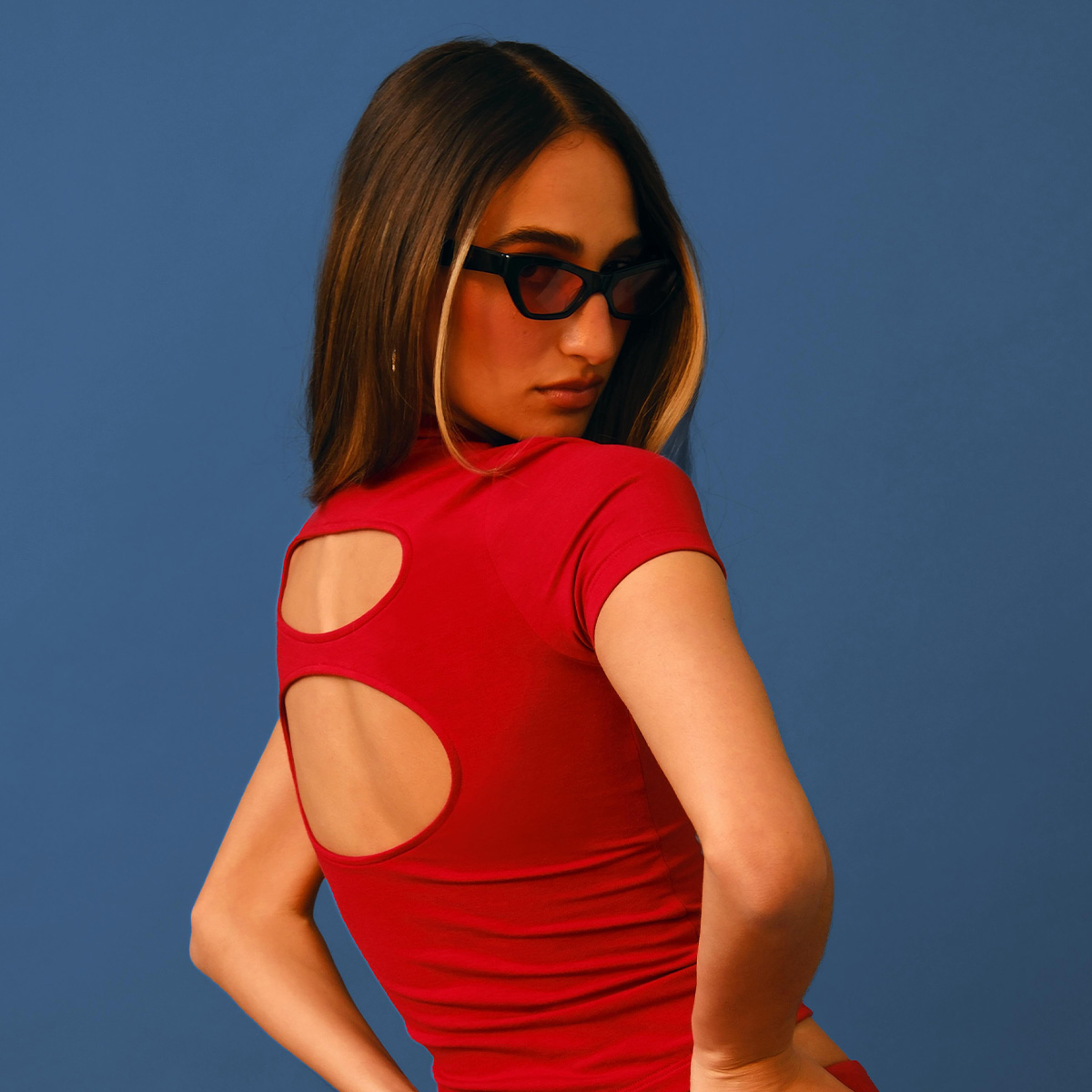 12 Chic Independent Designers to Support Now and Always
12 Chic Independent Designers to Support Now and AlwaysBoth at home and abroad.
By Ana Escalante
-
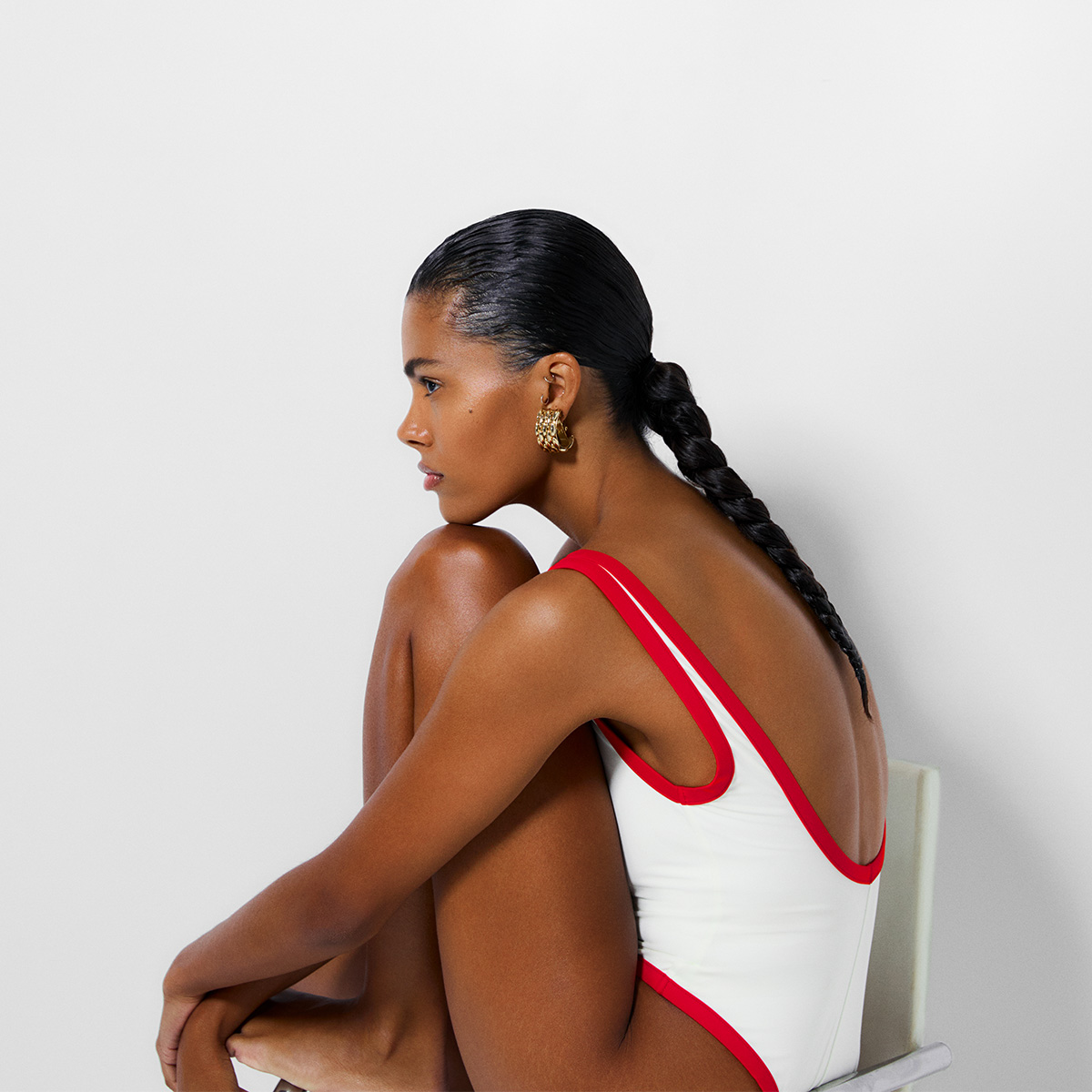 Reformation Finally Launched Swimwear, and the Collection Is Pure Elegance
Reformation Finally Launched Swimwear, and the Collection Is Pure Elegance*Orders every suit.*
By Eliza Huber
-
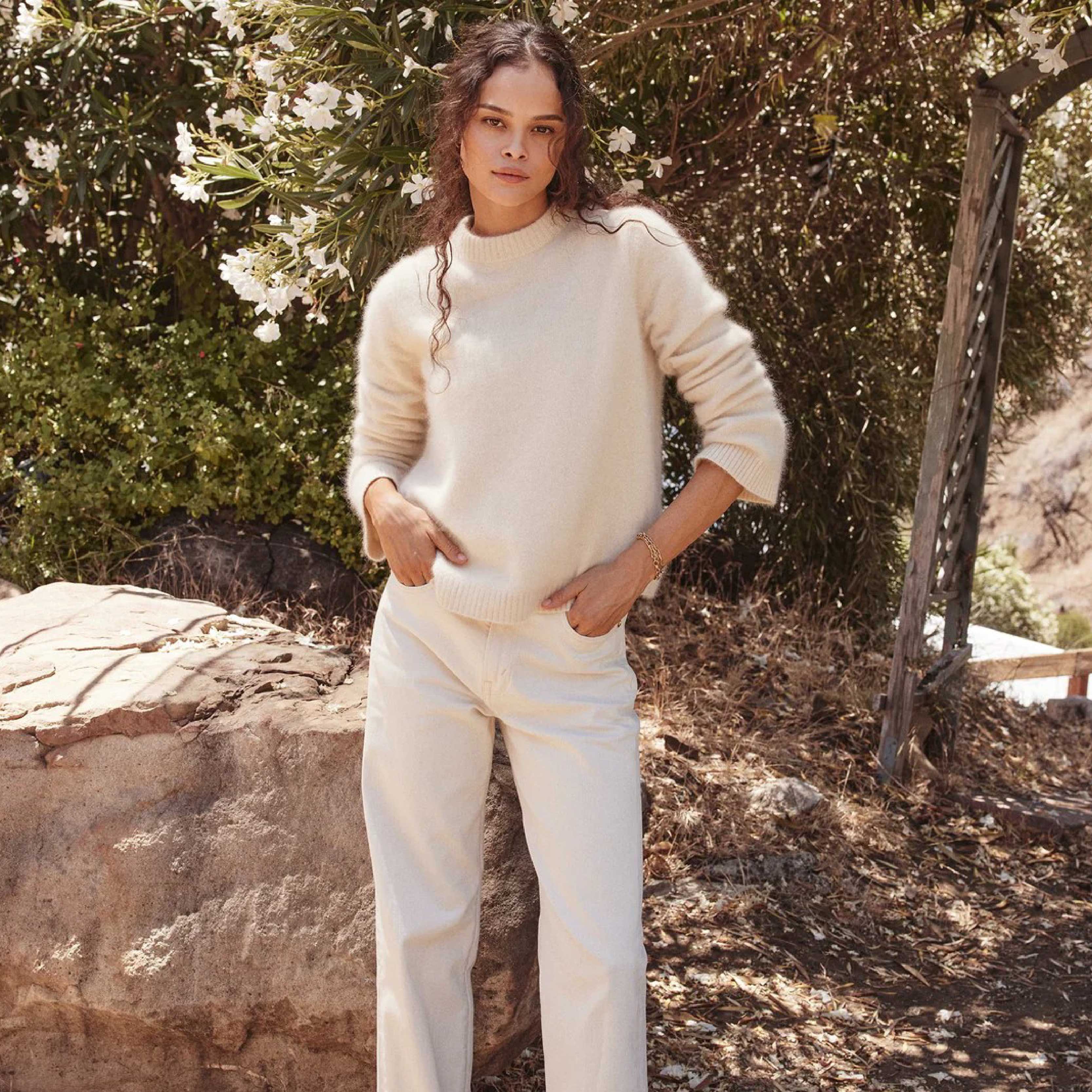 16 Classic Finds That Are Key to Building Your Perfect Capsule Wardrobe
16 Classic Finds That Are Key to Building Your Perfect Capsule WardrobeThis brand is a gem.
By Raina Mendonça
-
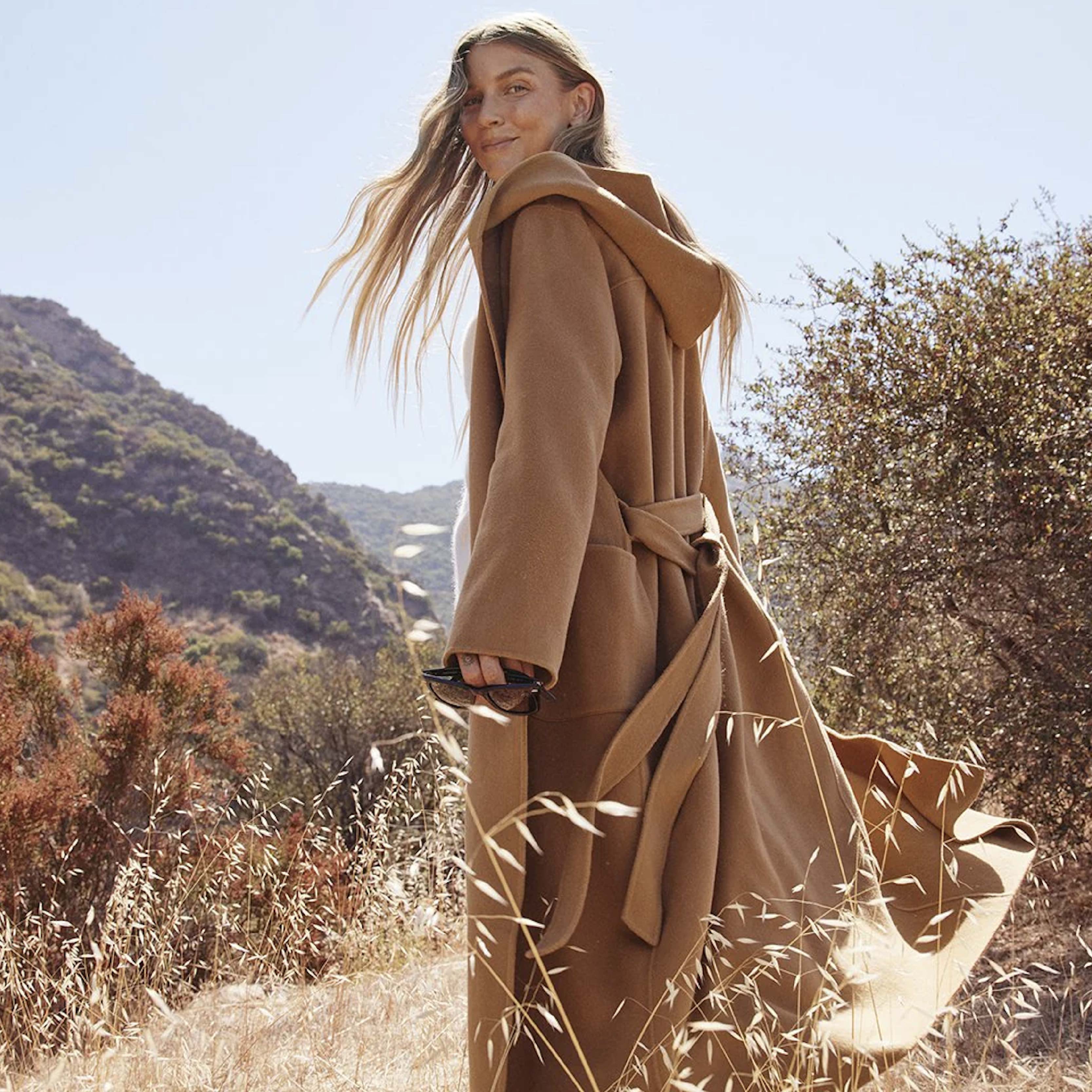 16 Classic Winter Fashion Finds That Will Stand the Test of Time
16 Classic Winter Fashion Finds That Will Stand the Test of TimeThese are winners.
By Raina Mendonça
-
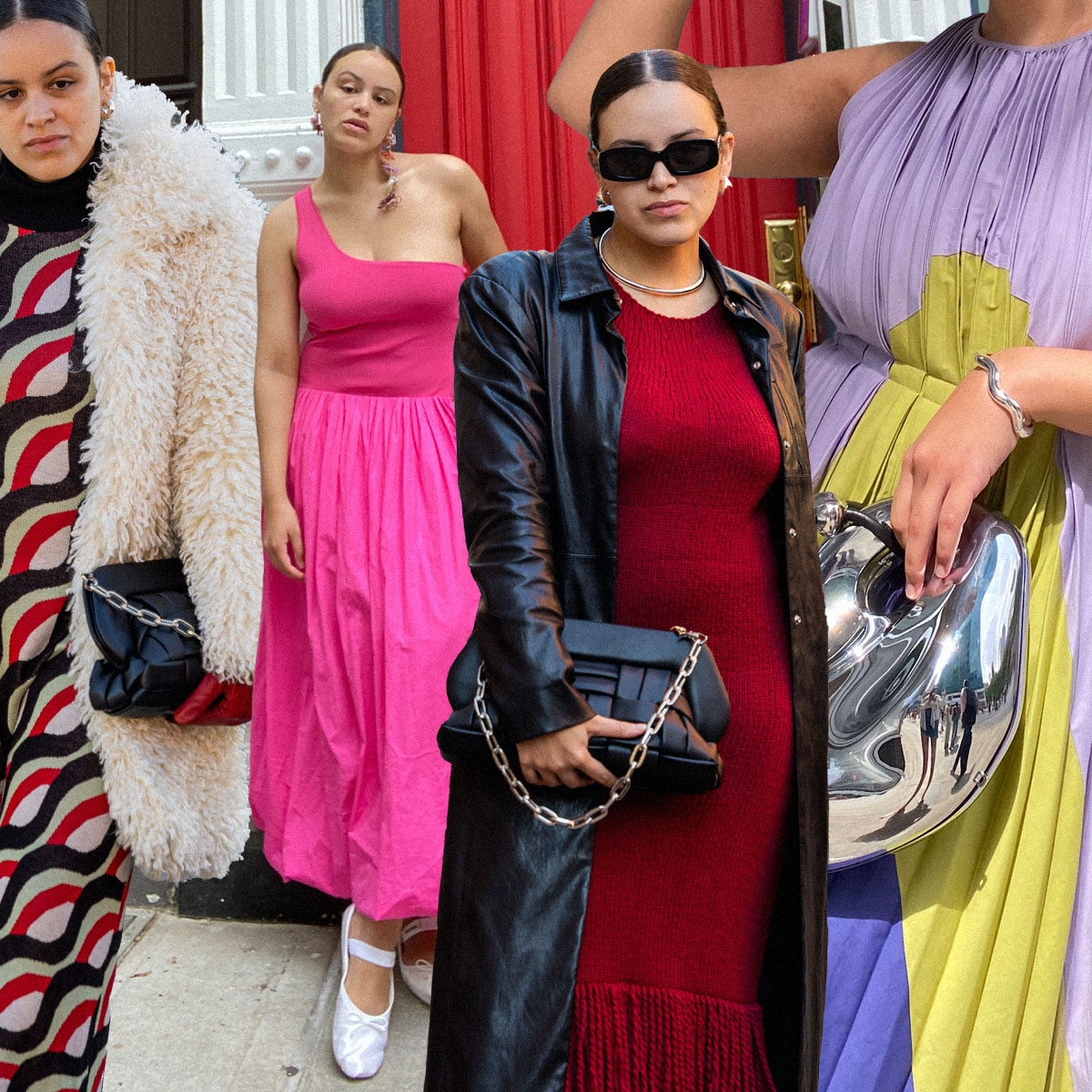 I Haven't Spent More Than $150 on Clothing in Six Months—Here's How I Did It
I Haven't Spent More Than $150 on Clothing in Six Months—Here's How I Did ItYes, really.
By Jasmine Fox-Suliaman
-
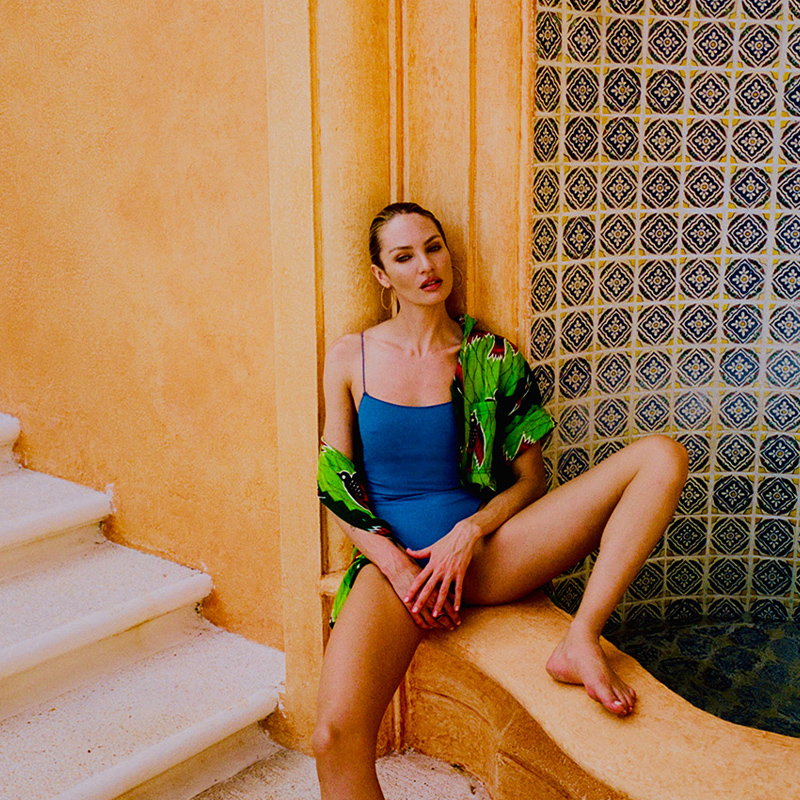 Feel and Look Good: Shop These Supermodel-Approved, Sustainable Summer Picks
Feel and Look Good: Shop These Supermodel-Approved, Sustainable Summer PicksSlow fashion is here to stay.
By Raina Mendonça
-
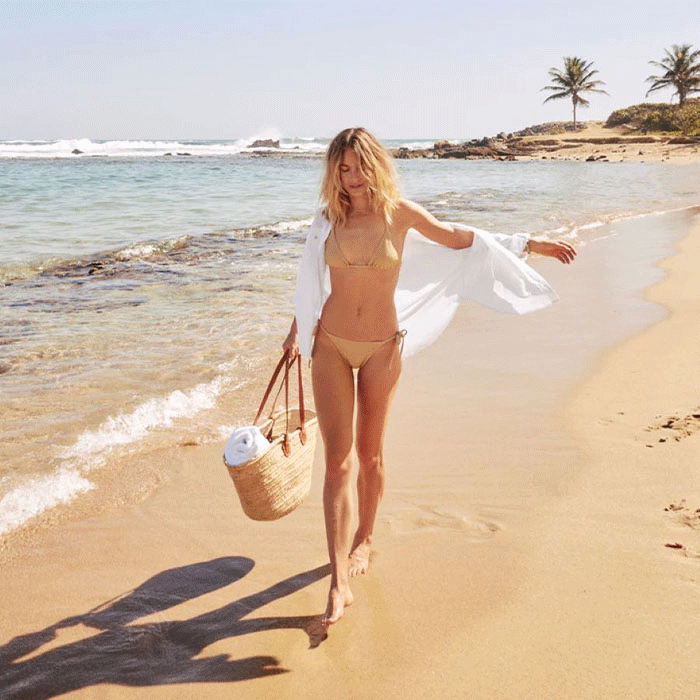 Slow Fashion Is the Move for 2023—I'm Living in These 16 Dreamy Pieces
Slow Fashion Is the Move for 2023—I'm Living in These 16 Dreamy PiecesYour new favorite eco-conscious label.
By Emma Walsh
-
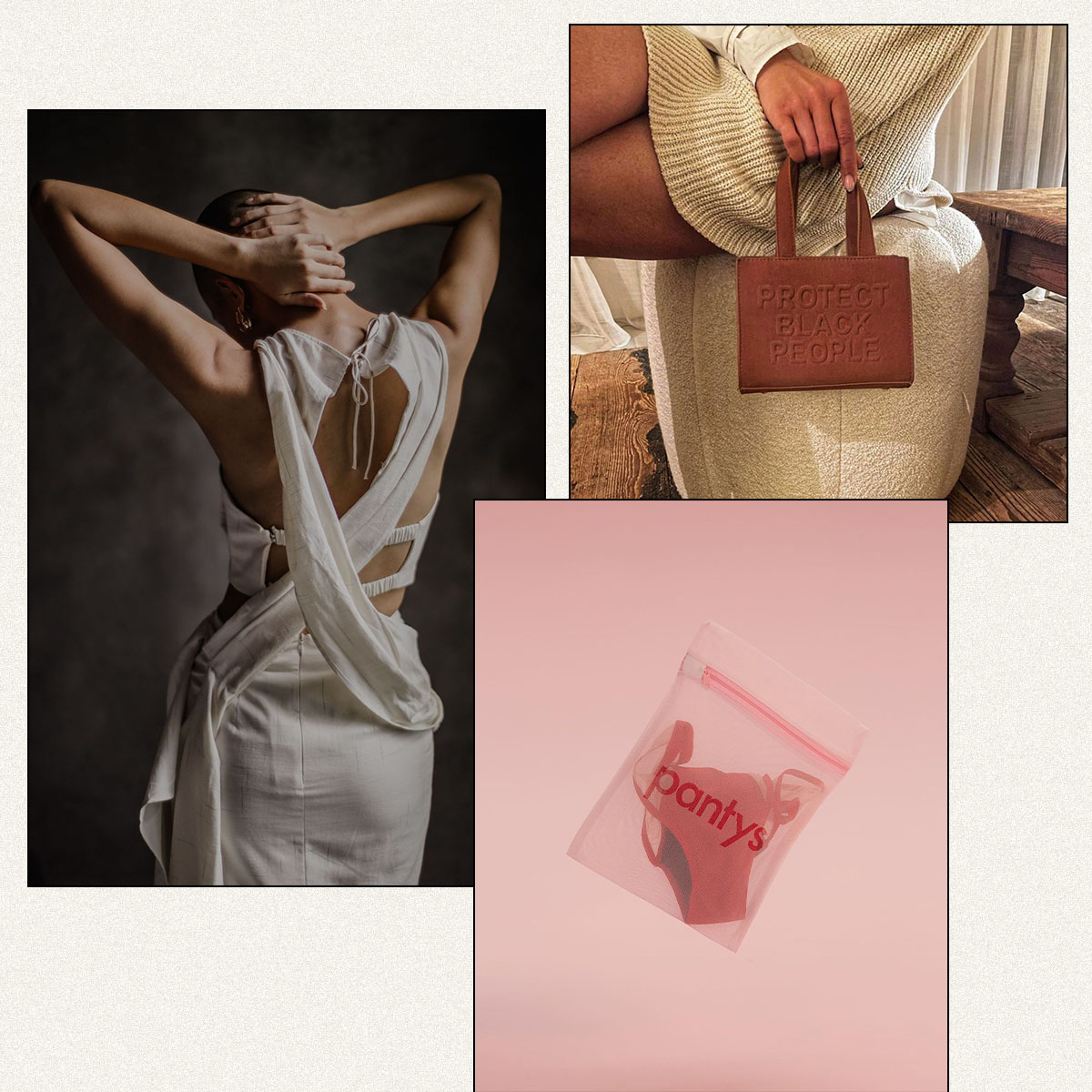 Cartier Is Empowering These Fashion Entrepreneurs Who Are Making a Difference
Cartier Is Empowering These Fashion Entrepreneurs Who Are Making a DifferenceThe 2023 Cartier Women's Initiative Awards are here!
By Kat Collings
